Returning to CU Boulder to Set New Plans in Motion
Sasaki is embarking on a campus master plan with the University of Colorado Boulder, nearly sixty years after the firm’s initial planning effort was completed in 1962.
 Sasaki
Sasaki
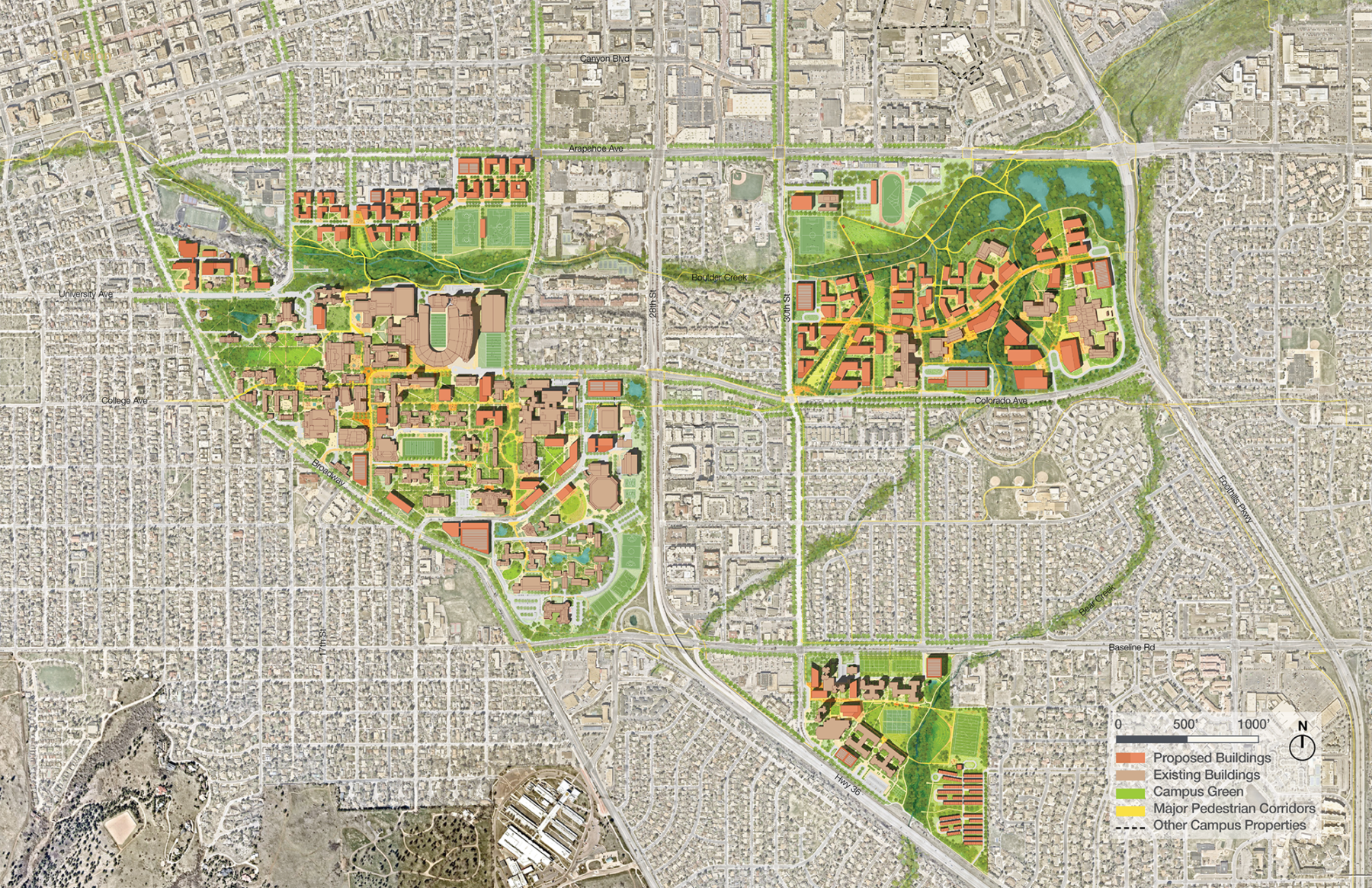
Through a holistic design approach, the CU Boulder Campus Master Plan 2021 supports the institution’s evolving identity as a leading public research university
Sasaki recently completed a comprehensive campus master plan (CMP) for the University of Colorado (CU) Boulder. This planning effort marks sixty years since Sasaki’s first involvement in developing a master plan for CU.
The CMP builds upon and integrates the university’s strategic plan, as well as its recently completed housing master plan, transportation master plan, and energy master plan. The plan considers how to best leverage CU’s multiple campus landholdings in support of its mission while also preserving the unique historical character of the main campus core.
Significant areas for growth include both research and housing and the plan identifies various strategies for accommodating these facilities throughout the campus environs with emphasis on and consideration of campus connectivity. Sustainability, not only as it relates to energy but also in terms of water resources, ecology, and resiliency, are key strategies that underlie every aspect of the planning. The planning process was highly participatory, engaging students, faculty, and staff from CU’s campus community, as well as alumni, University of Colorado system administrators, and the Design Review Board.
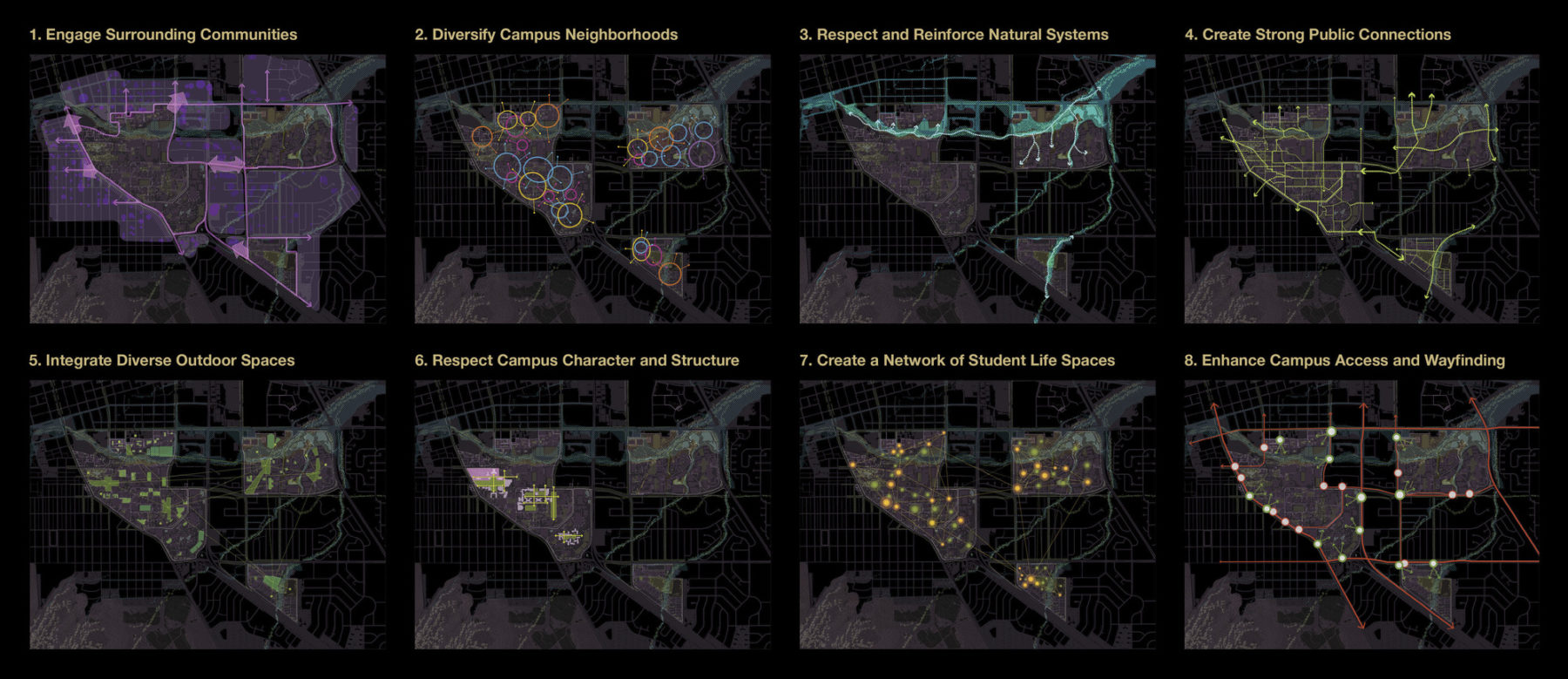
A set of eight design principles, developed alongside the master plan, govern the long-term development of the campus
The CU Boulder campus comprises three proximate properties, all of which are located within the City of Boulder: Main Campus, including the North Boulder Creek housing district; East Campus; and Williams Village. The design team studied the architectural and open space character of each during their analysis and documented the rich design context within the various districts and campuses.
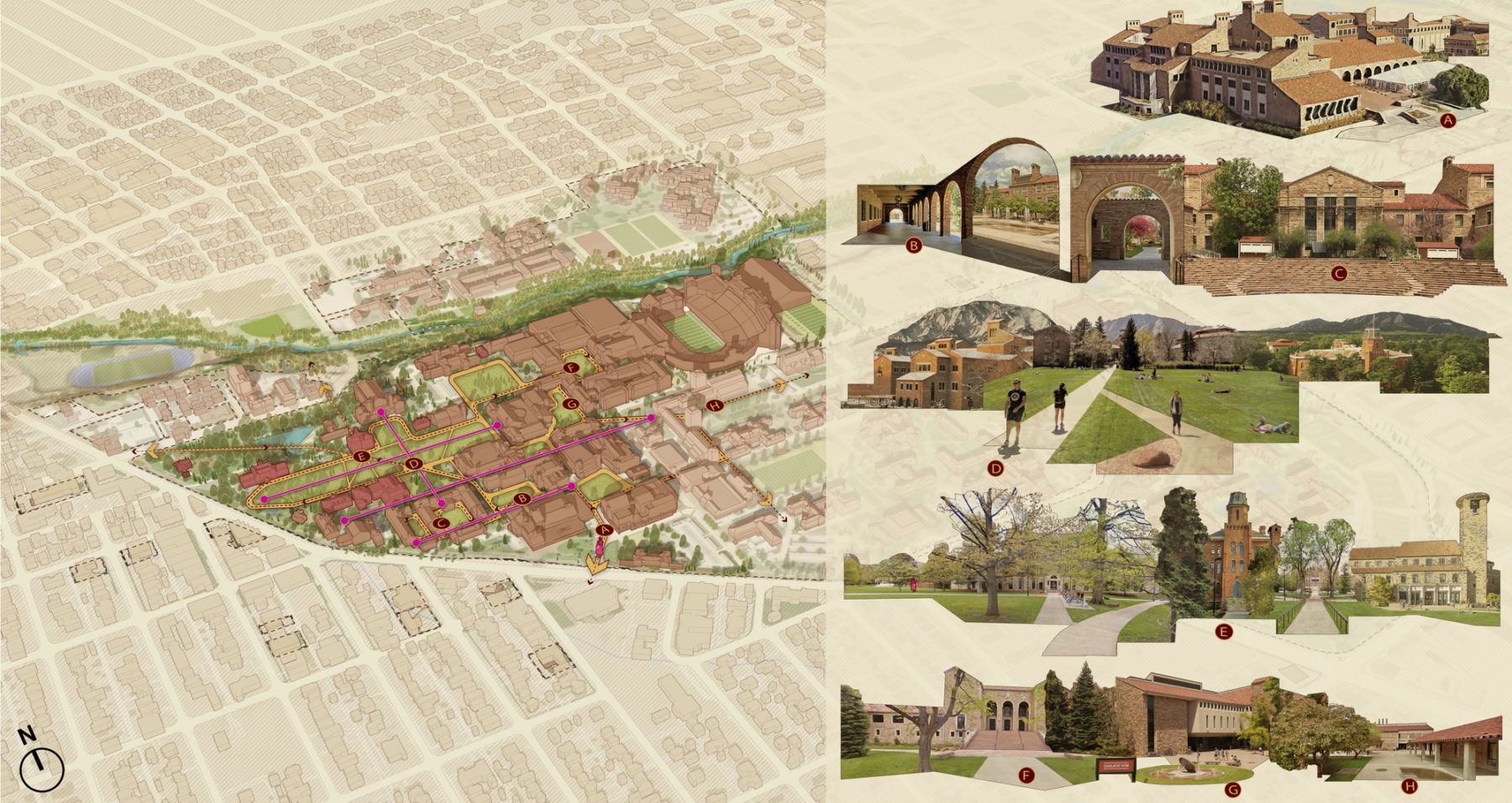
Historic district character of Main Campus
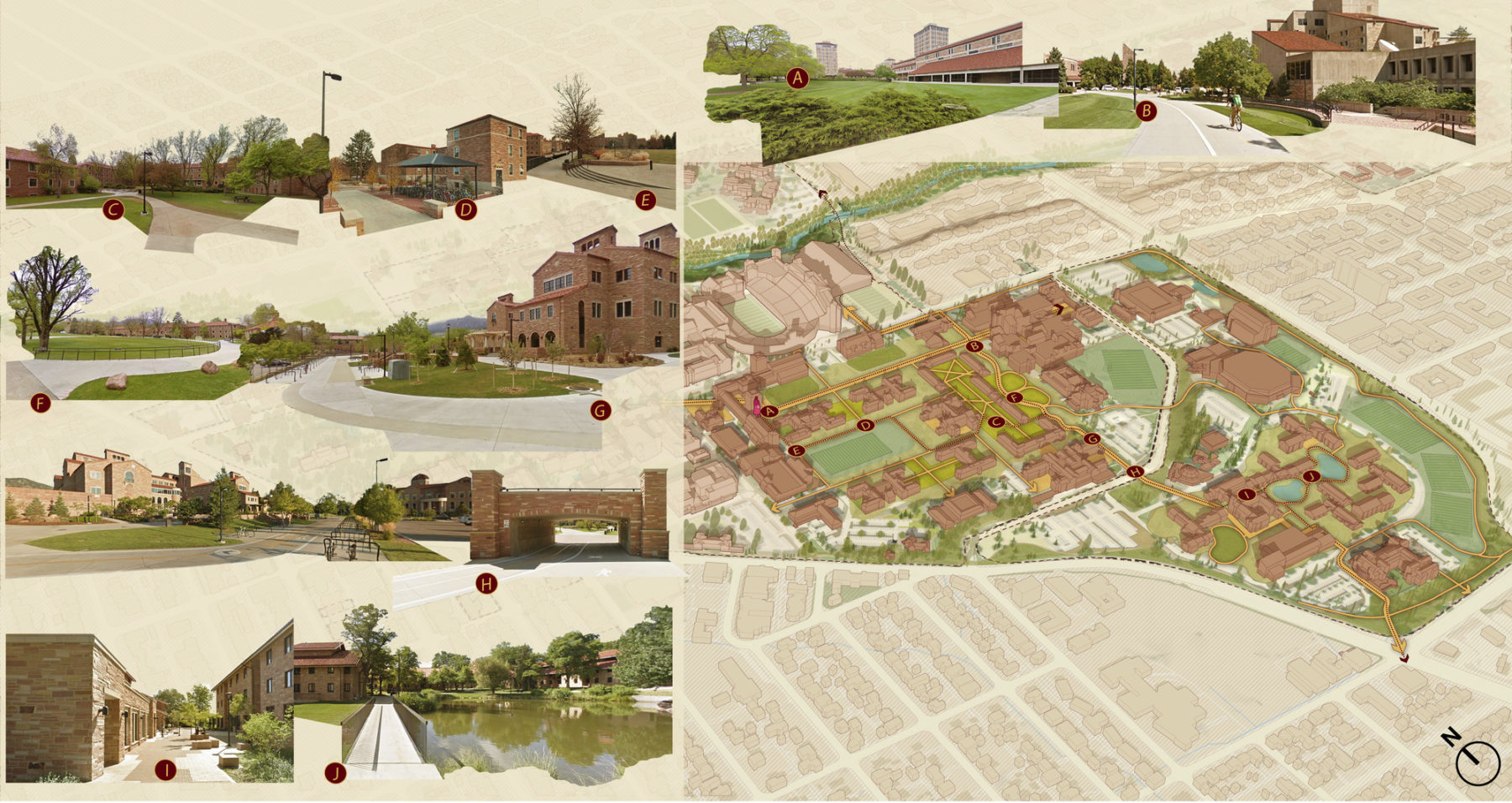
Farrand and Kittredge District character of Main Campus
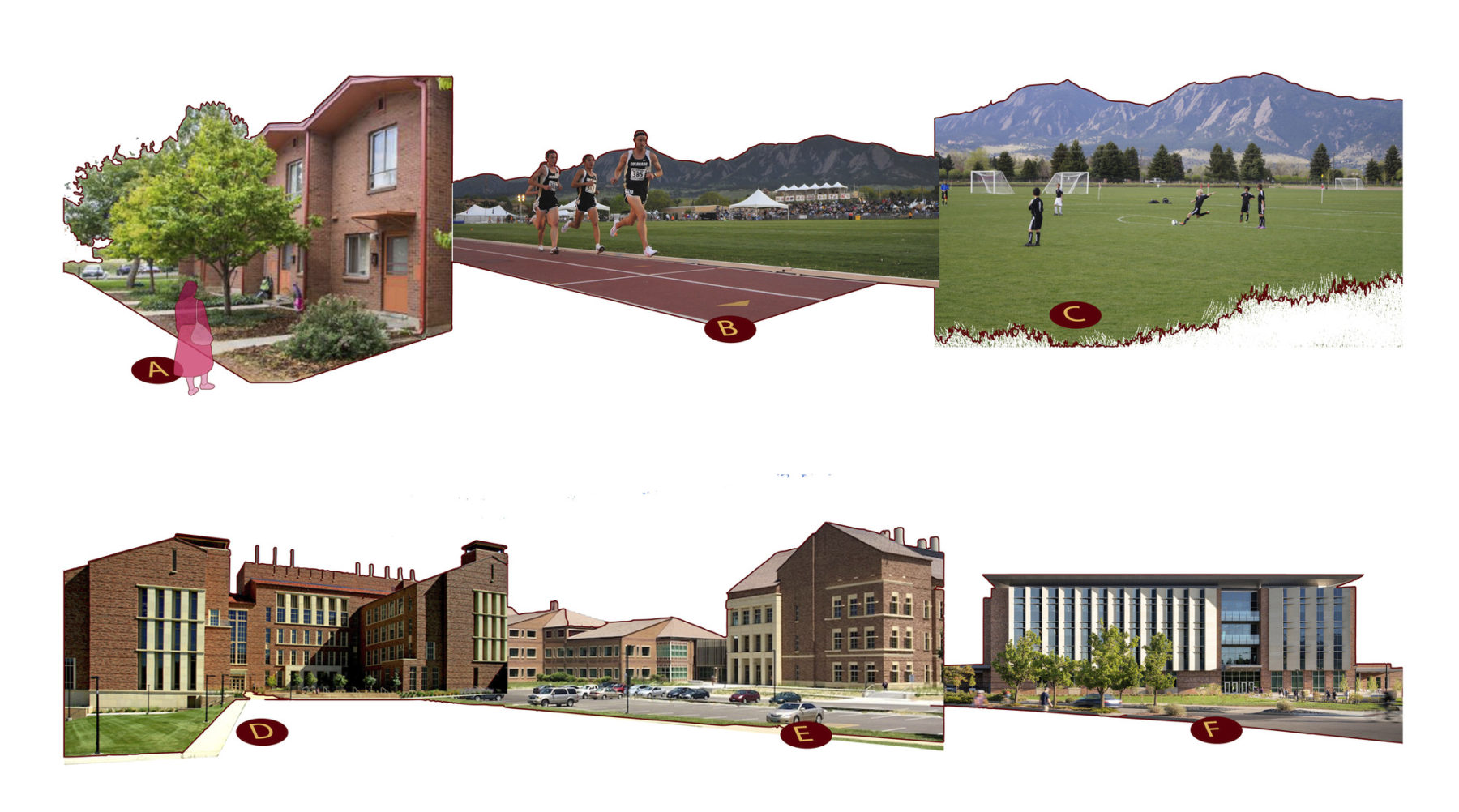
District character of East Campus
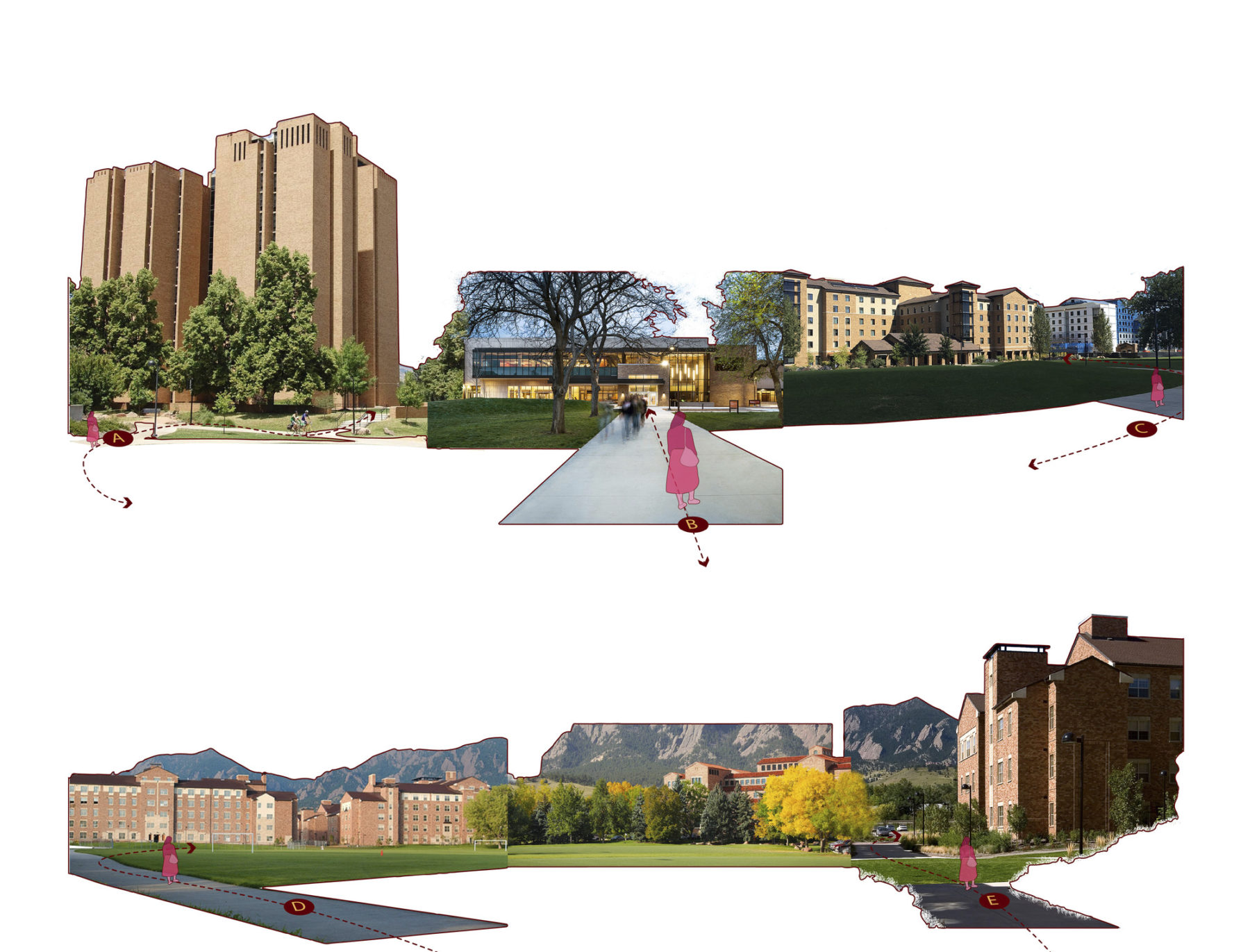
District character of Williams Village
Farrand and Kittredge District character of Main Campus
District character of East Campus
District character of Williams Village
The CMP identified four distinct campuses or districts, each with its own character, and created frameworks for each to guide development.
The historic heart of CU Boulder, containing many of the core academic, research, and student life functions of the campus. The plan proposes a long-term growth strategy that is sensitive to the historic context. The majority of new building development hugs either side of Regent Drive, transforming this corridor from a disconnected vehicular roadway into a more intimately-scaled campus street.
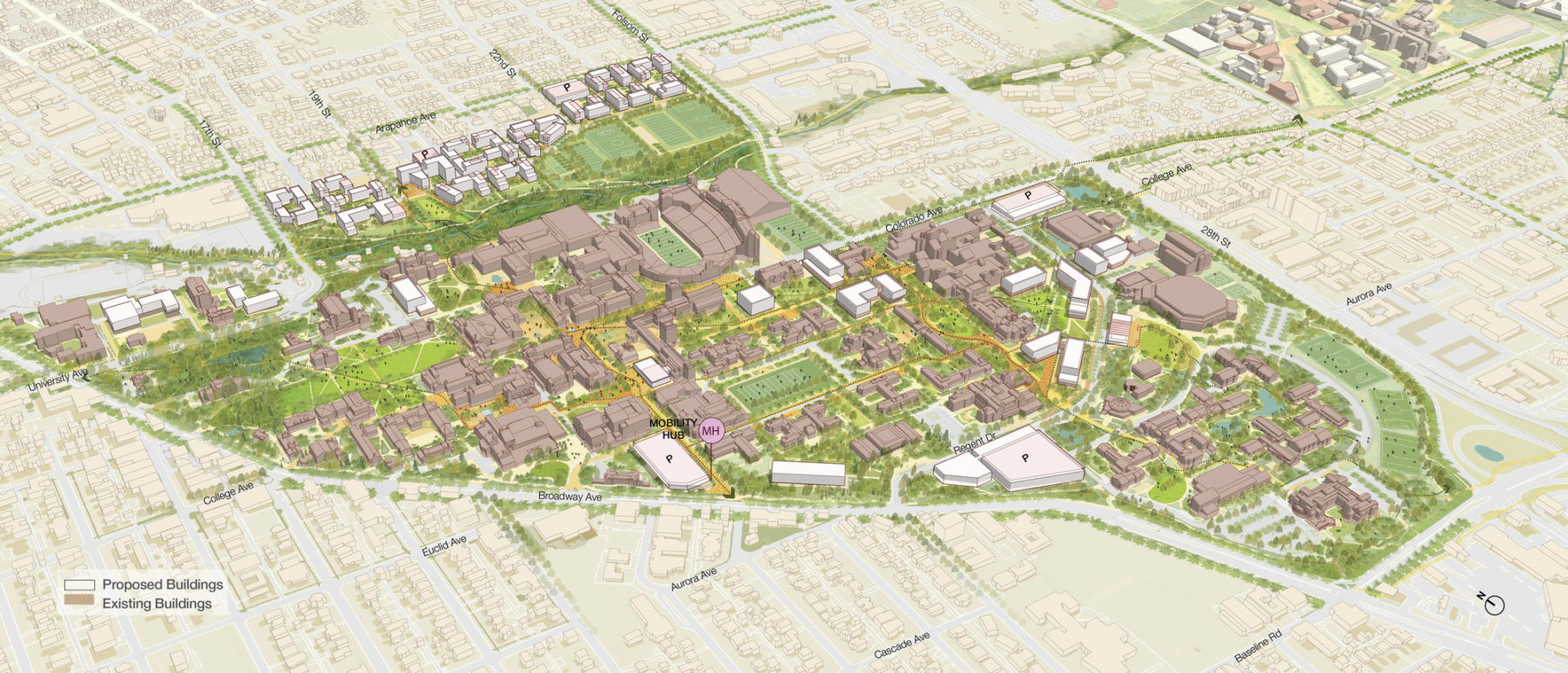
Main Campus framework
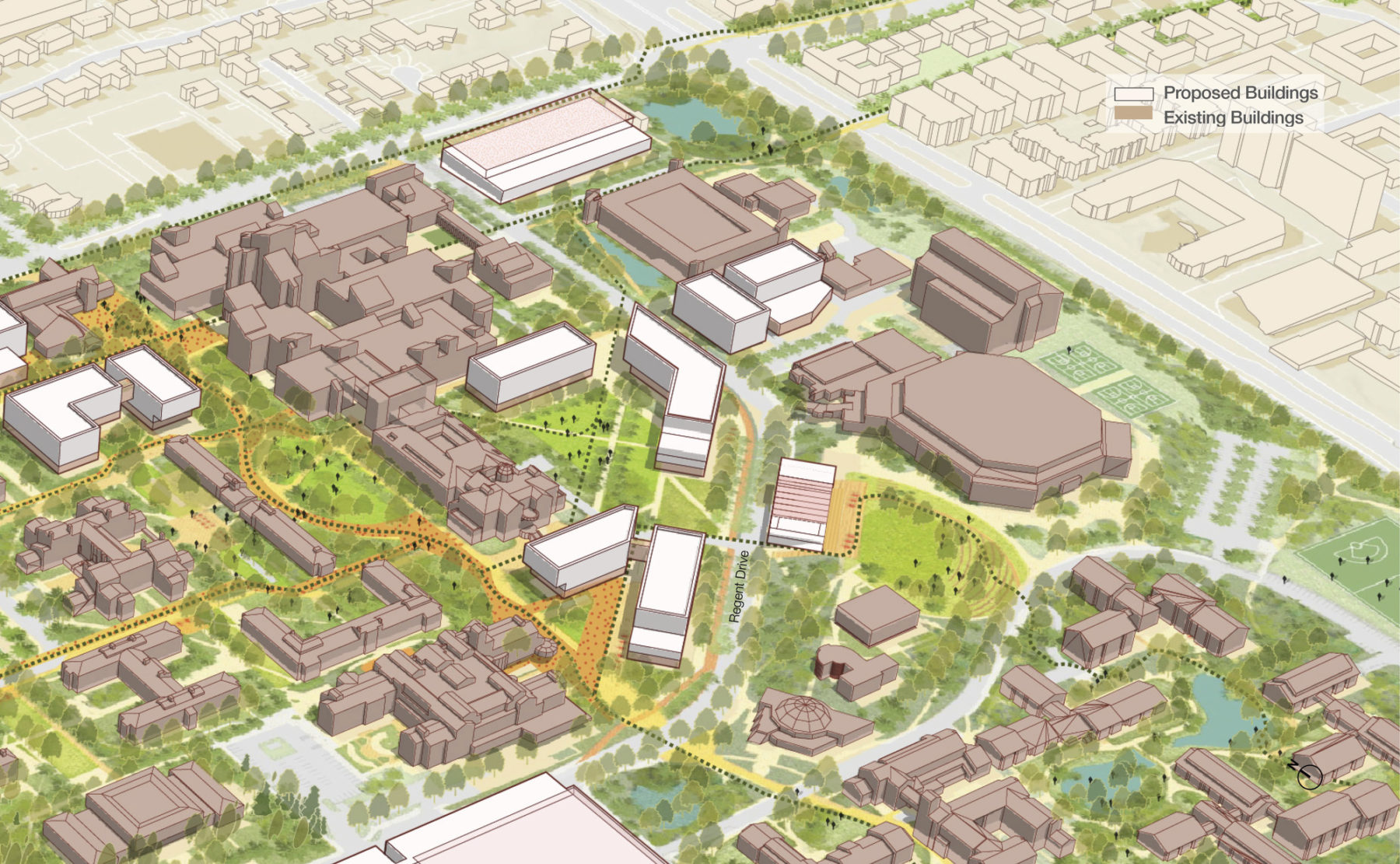
The master plan vision improves the student experience and safety along Regent Drive with new landscapes from the proposed academic buildings and an upgraded bike network and street edge conditions
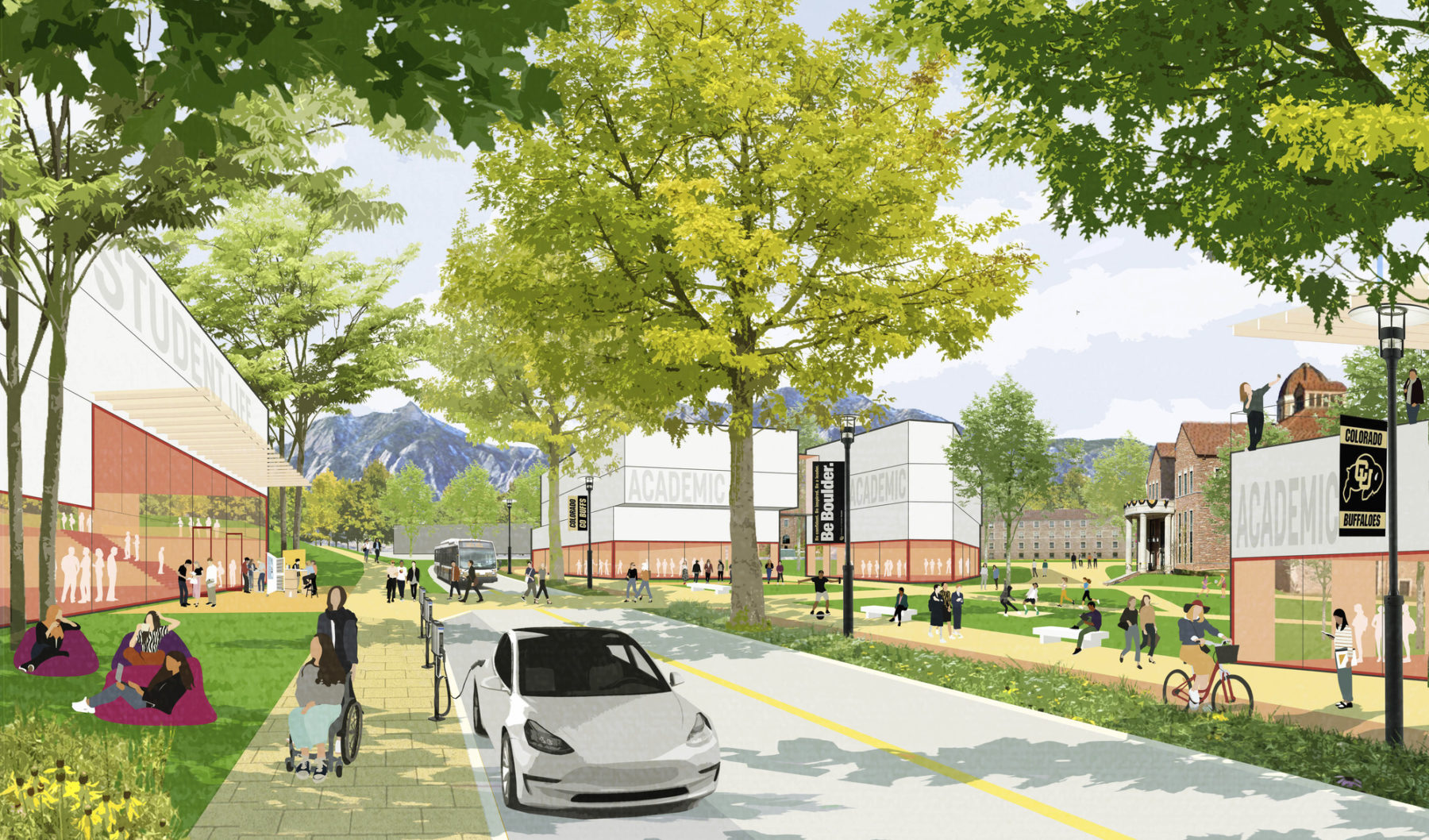
Main Campus along Regent Drive looking west towards the Flatirons
This district is characterized by low density apartment complexes within a residential street grid abutting Boulder Creek. The proposed NBC framework balances programmatic demand with formal and informal open spaces. Due to its proximity to Main Campus, enhanced with the completion of the two new bridge connections, NBC offers an opportunity to significantly increase residential density.
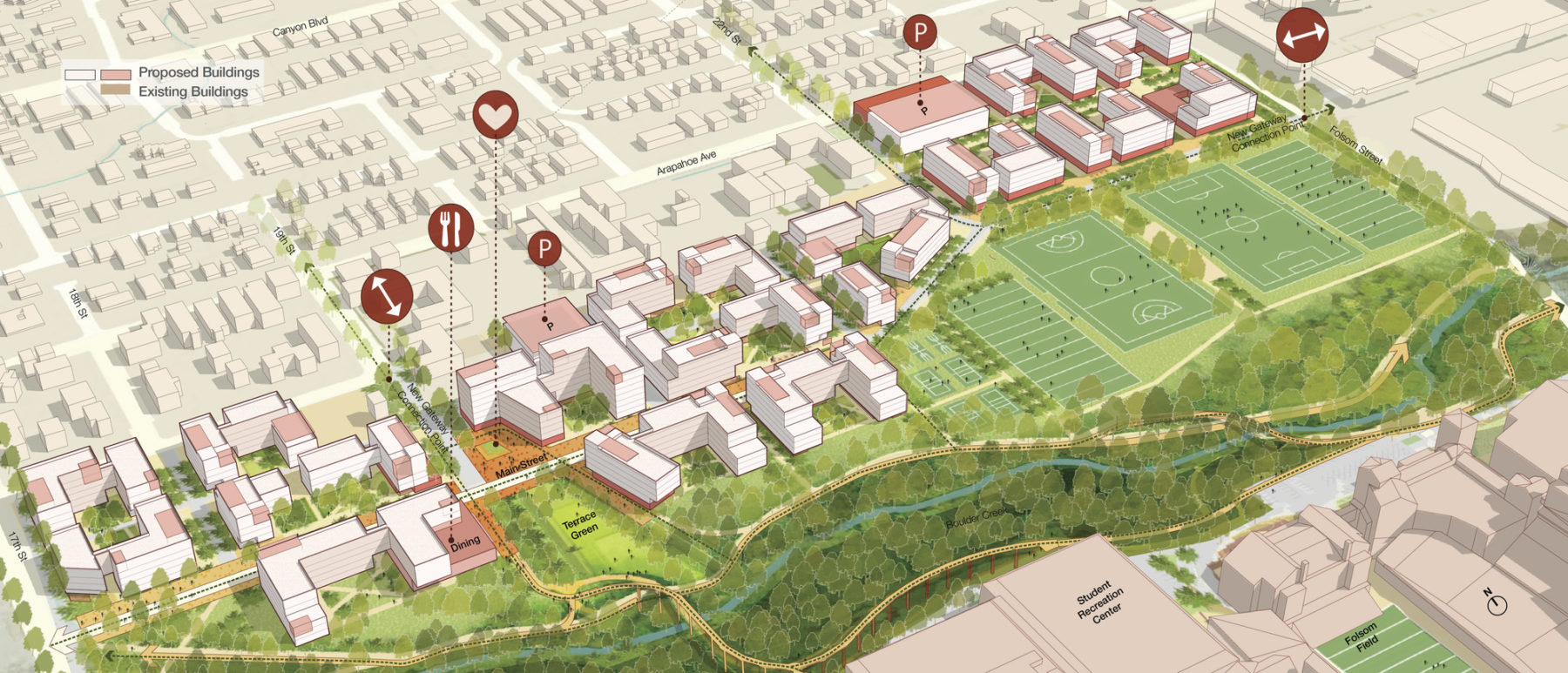
Proposed North Boulder Creek framework
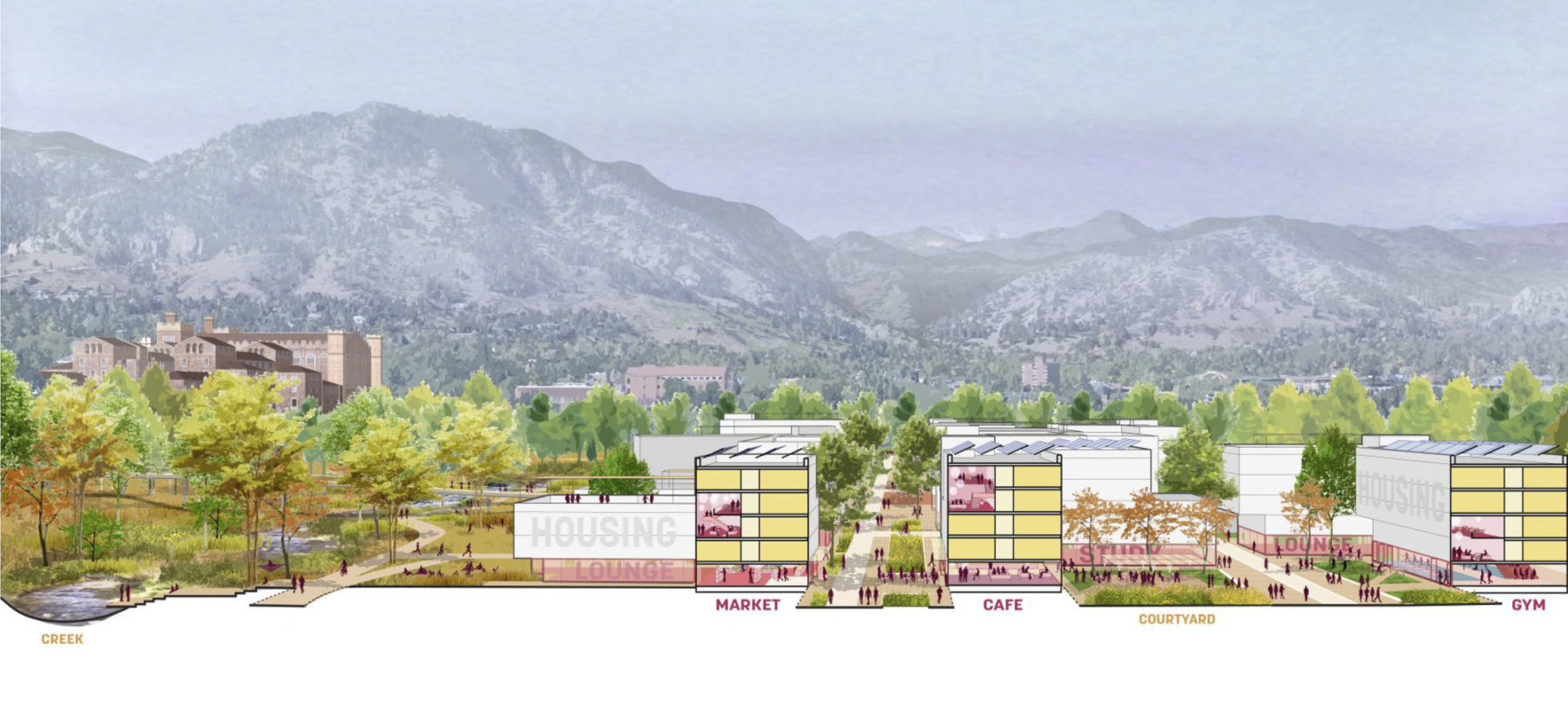
The central spine of the NBC District will serve as a pedestrian-priority corridor, acting as “main street” for student residents
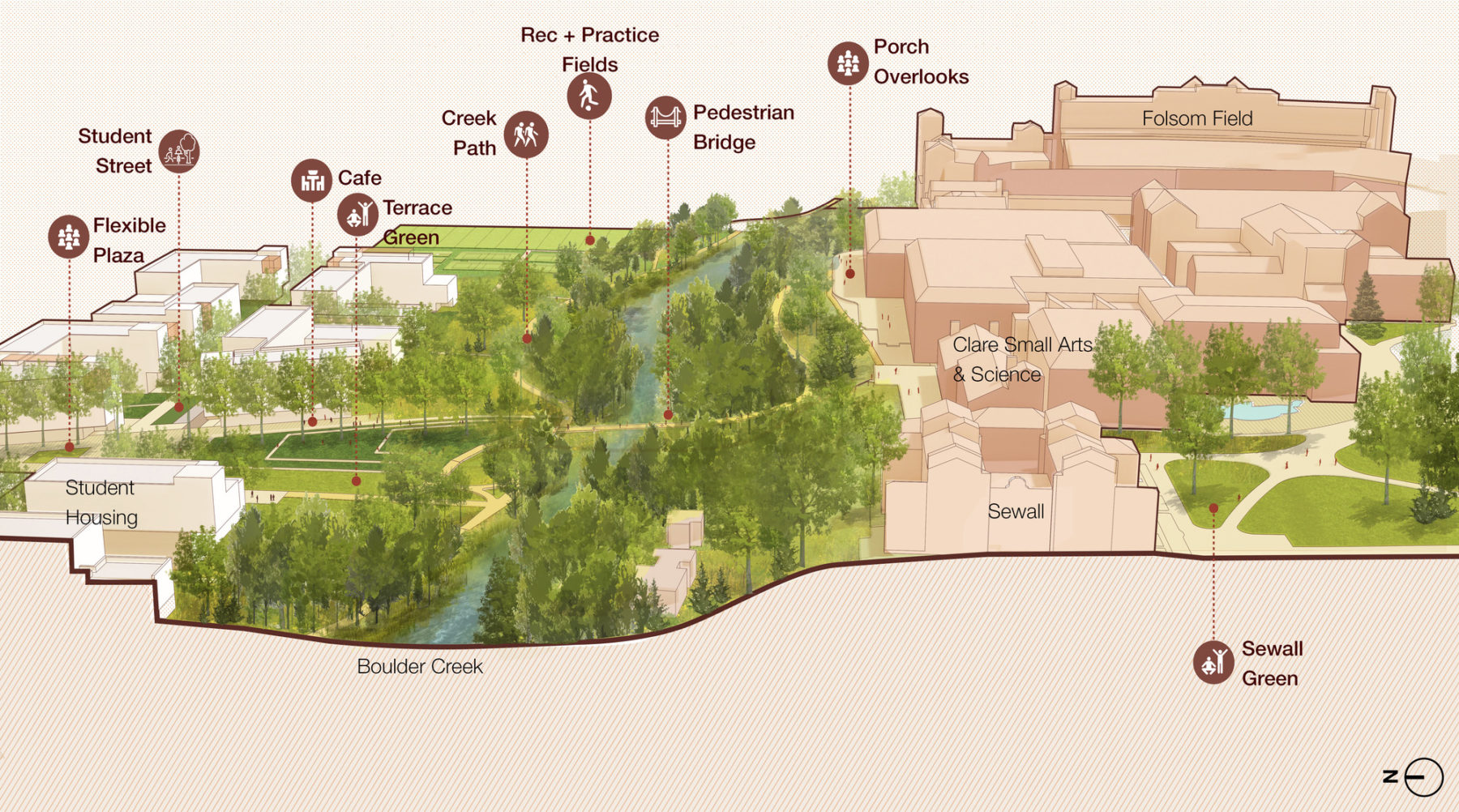
At the social heart of NBC is Terrace Green—a new landscape that celebrates the unique riparian landscape of Boulder Creek and provides flood capacity
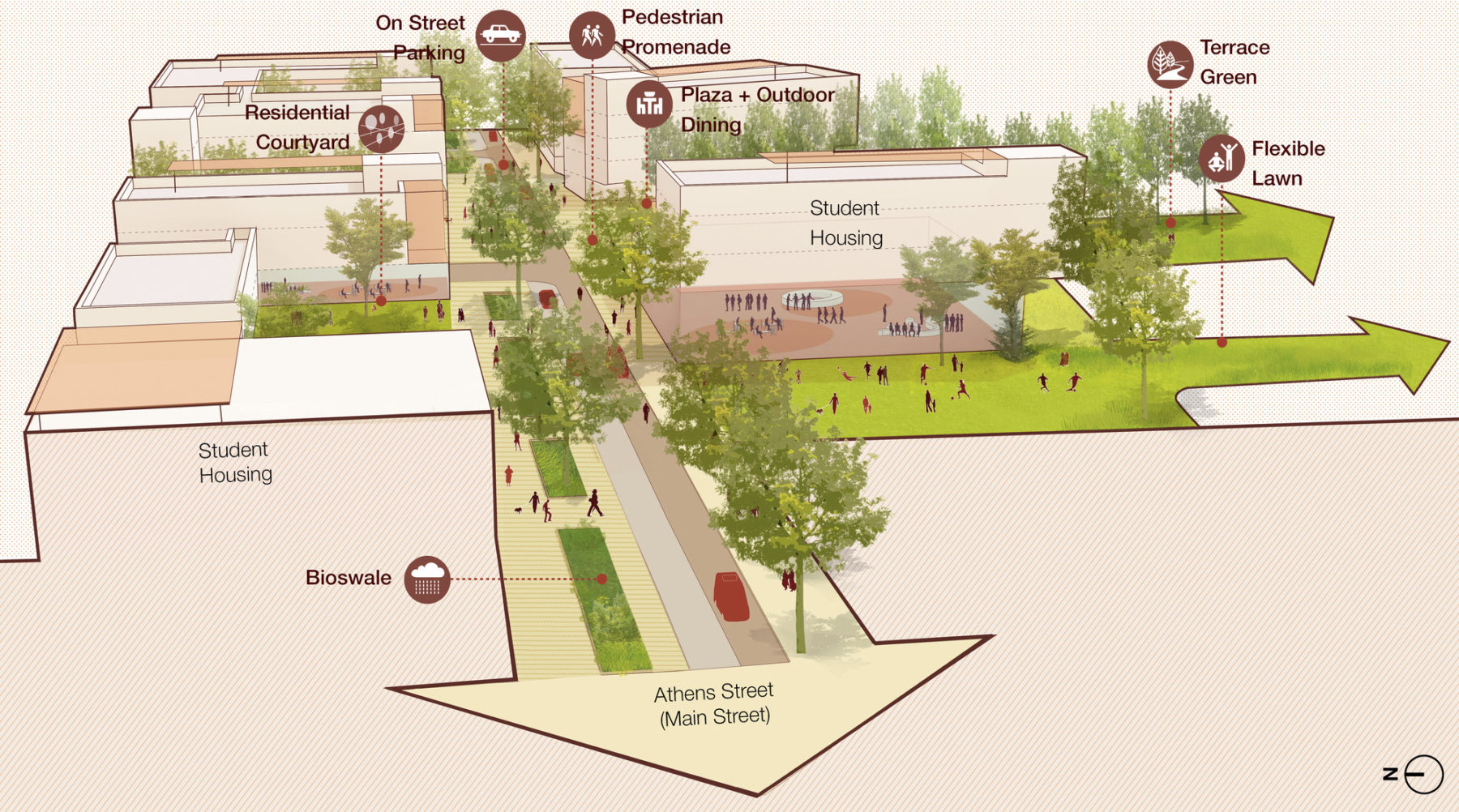
New residential buildings at NBC feature courtyards for passive recreation and provide direct links to Boulder Creek
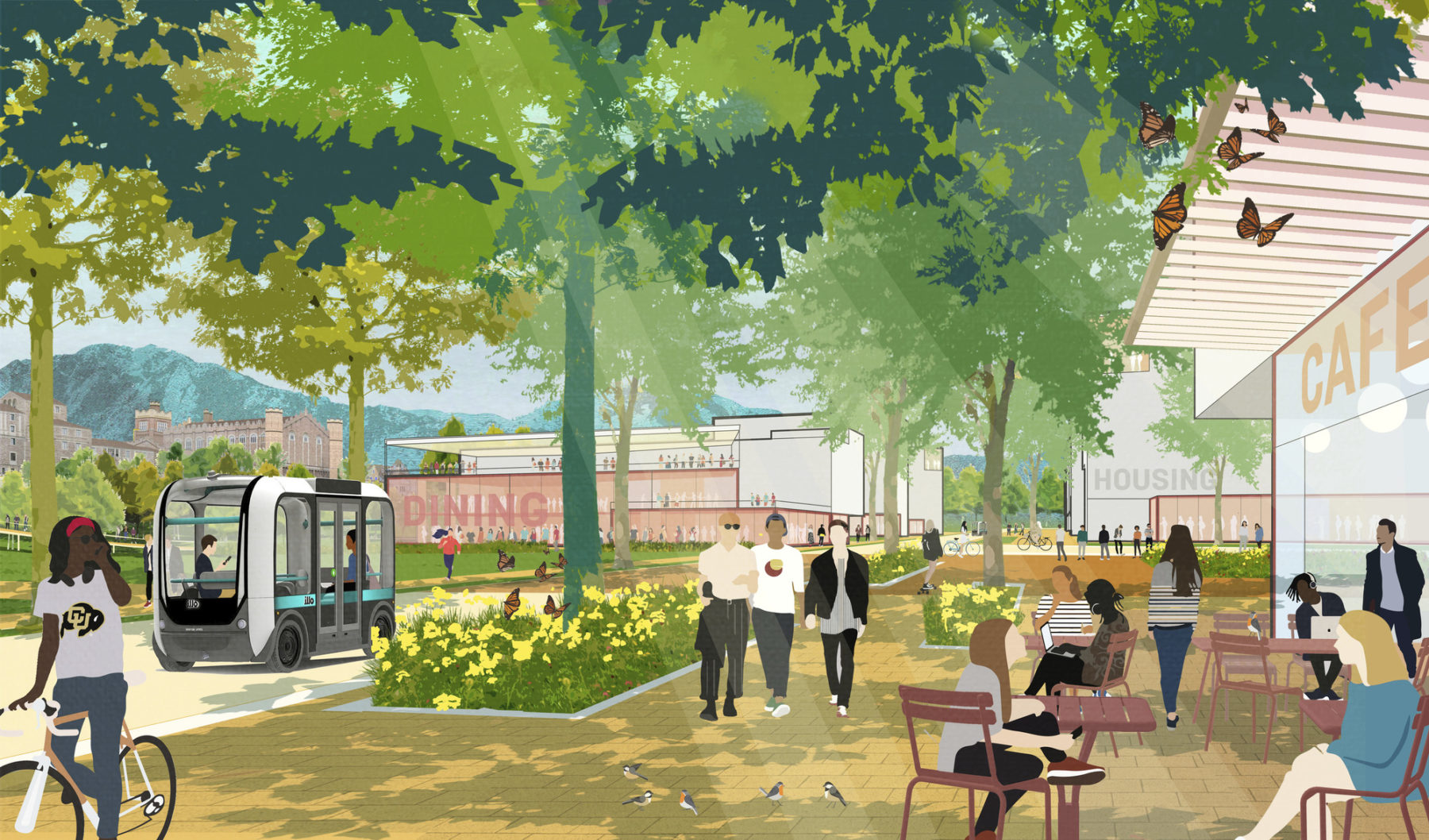
Vision for the new student street in the NBC District
This district offers a diverse range of building typologies and architectural character. The proposed framework for East Campus imagines a vibrant mixed-use campus anchored around the Campus Heart—the district’s landscape feature. Aside from that, a defining element is the reimagined and realigned Discovery Drive, which serves as a central pedestrian-priority spine that connects the campus from west to east.
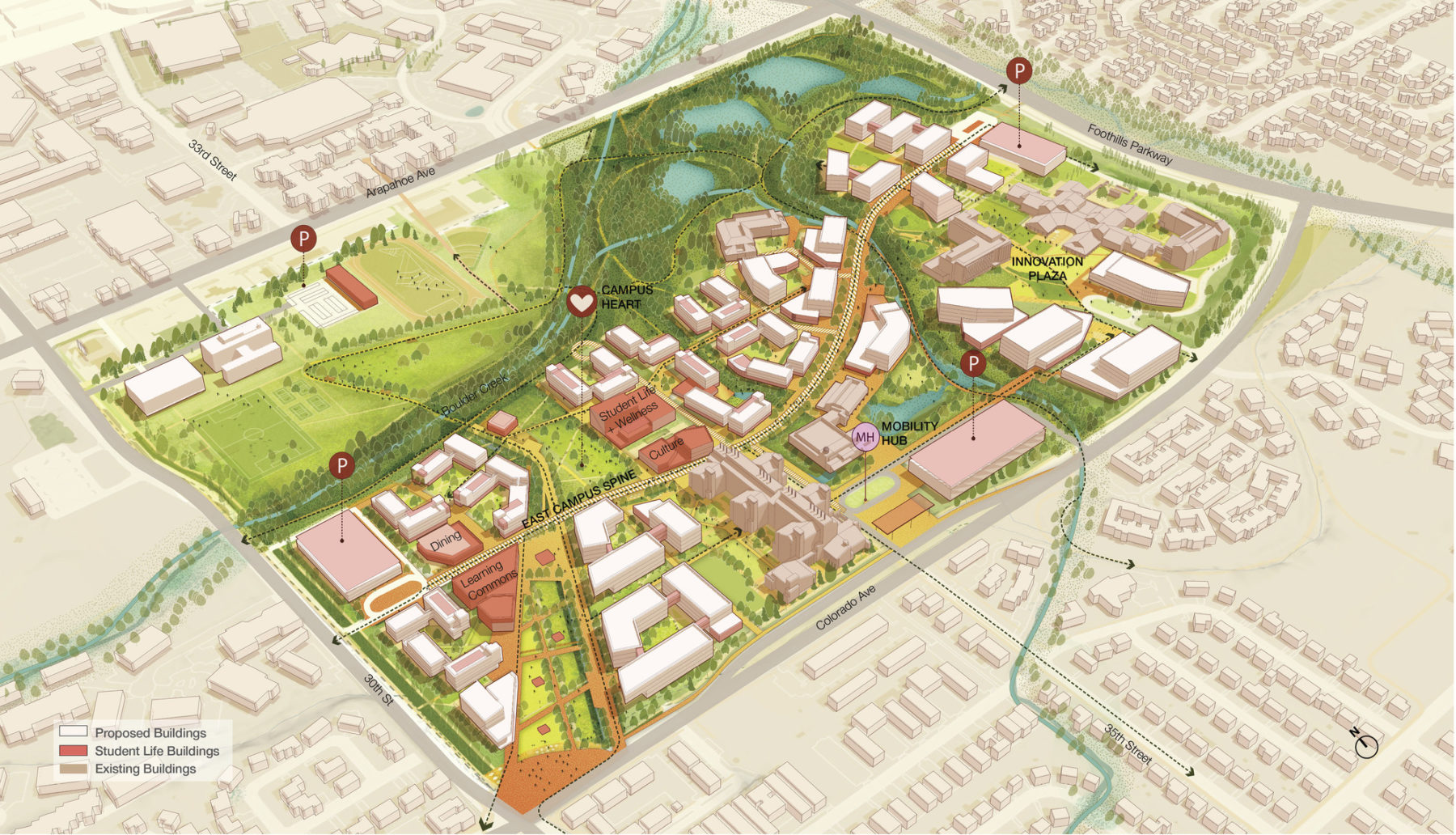
East Campus framework
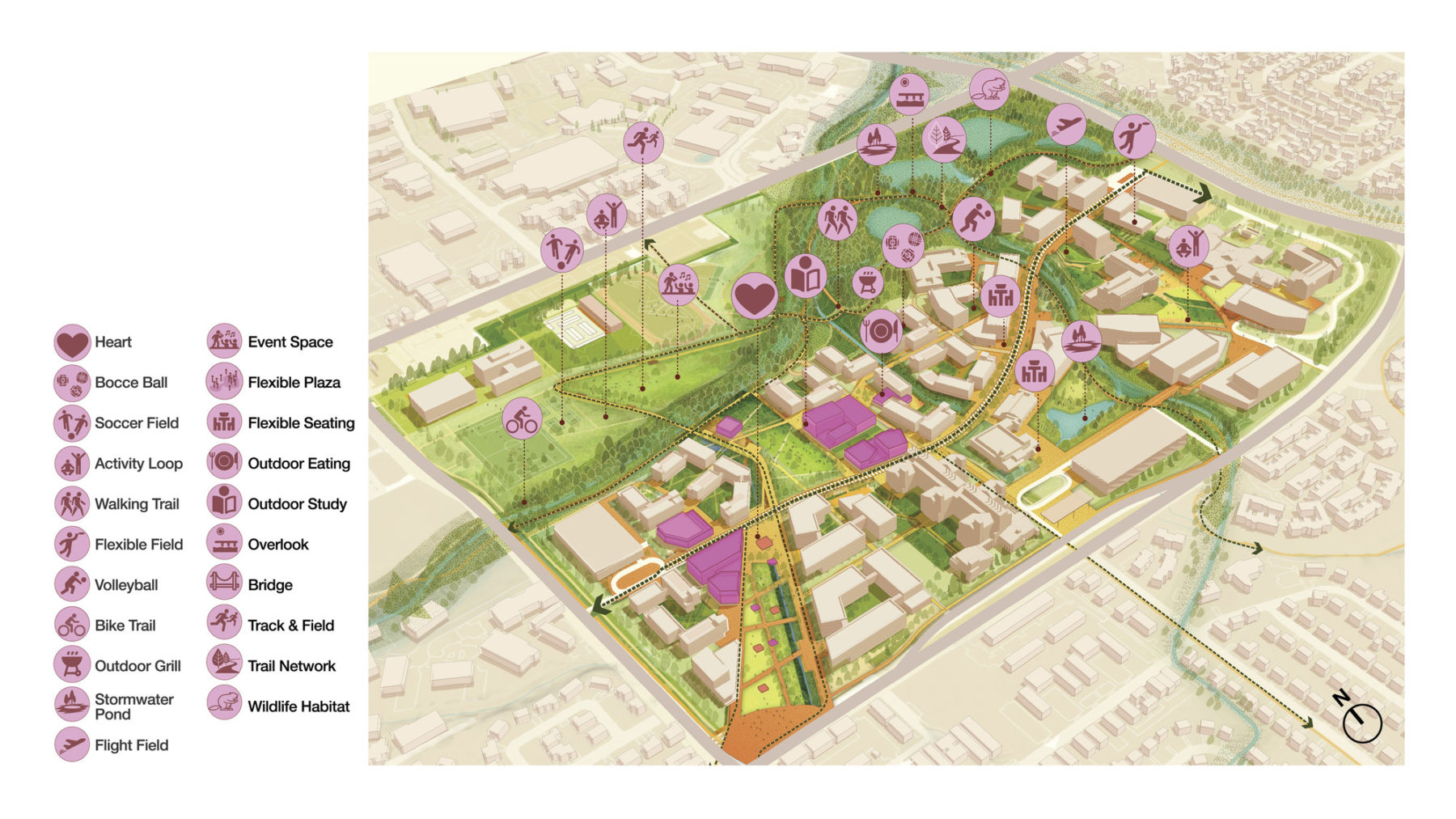
The Campus Heart is the anchor landscape feature and an important part of the social fabric of East Campus
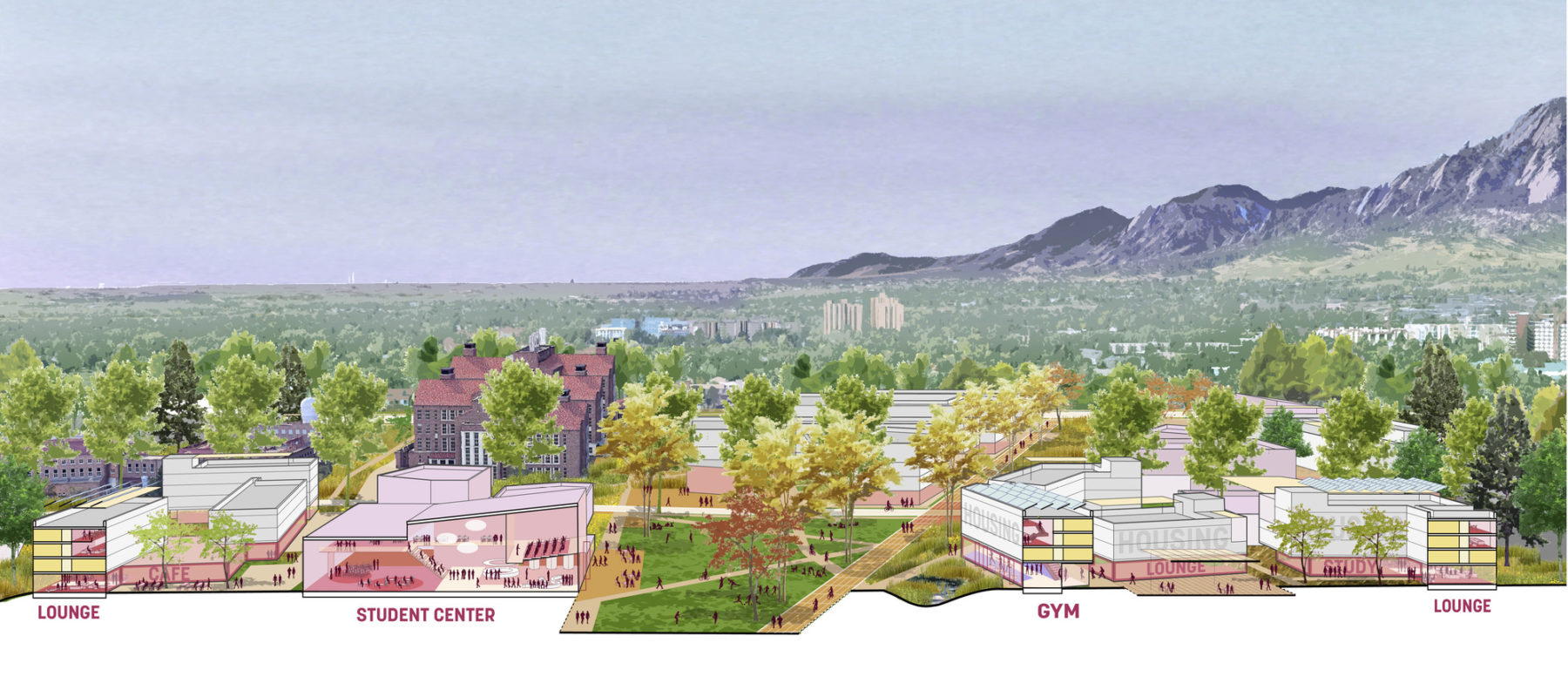
Buildings surrounding the Campus Heart engage with the landscape to create indoor-outdoor connectivity
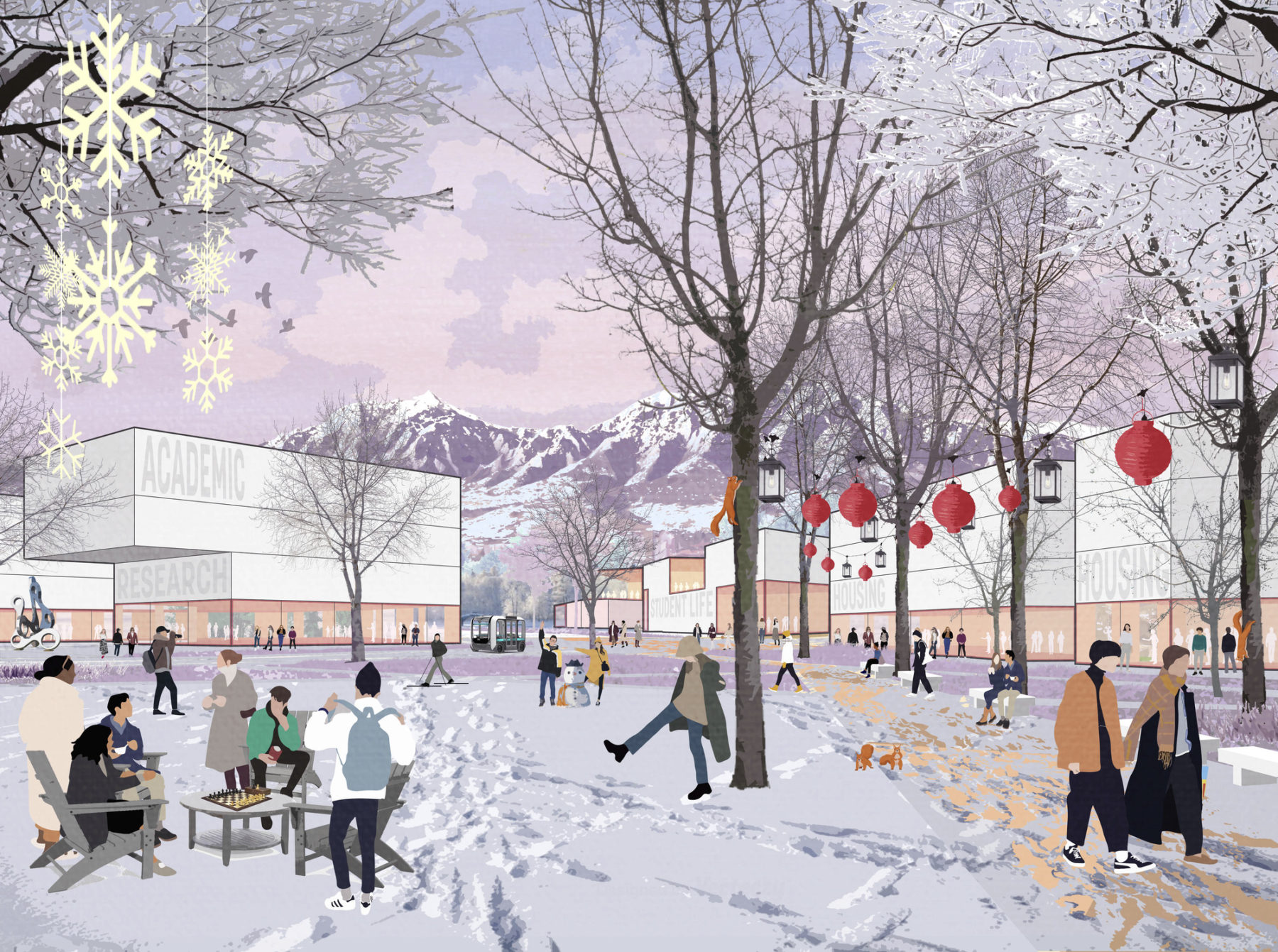
Campus Heart, Winter: Given this space is south-facing and receives Colorado’s ample year-round sunshine it can comfortably support outdoor activities in winter
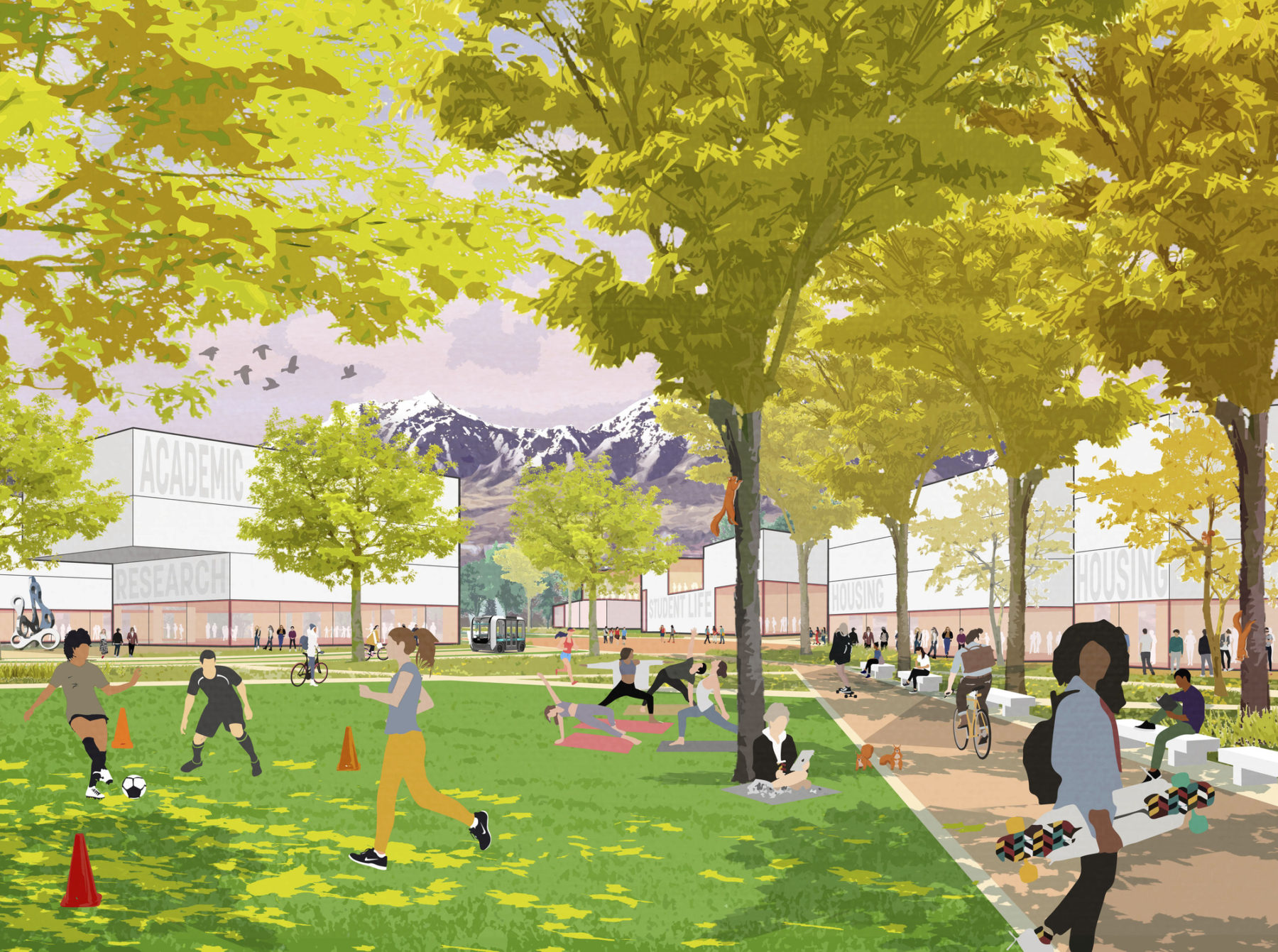
Campus Heart, Summer: The Campus Heart is designed to support year-round activity, including passive recreation, collaboration, and meeting space, as well as space for more organized activities
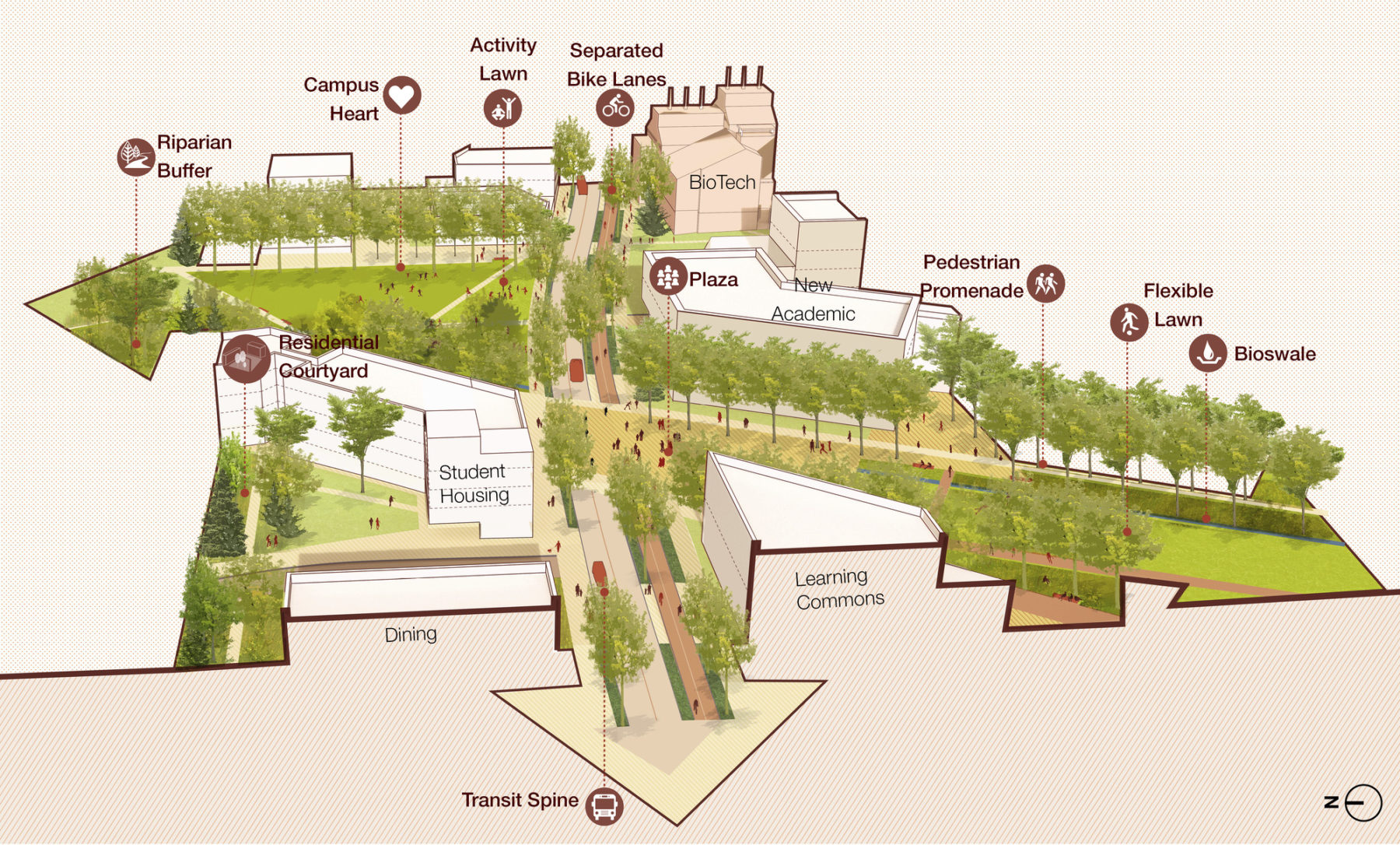
Discovery Drive is reimagined as the East Campus Spine—a pedestrian-priority corridor that provides connectivity across East Campus
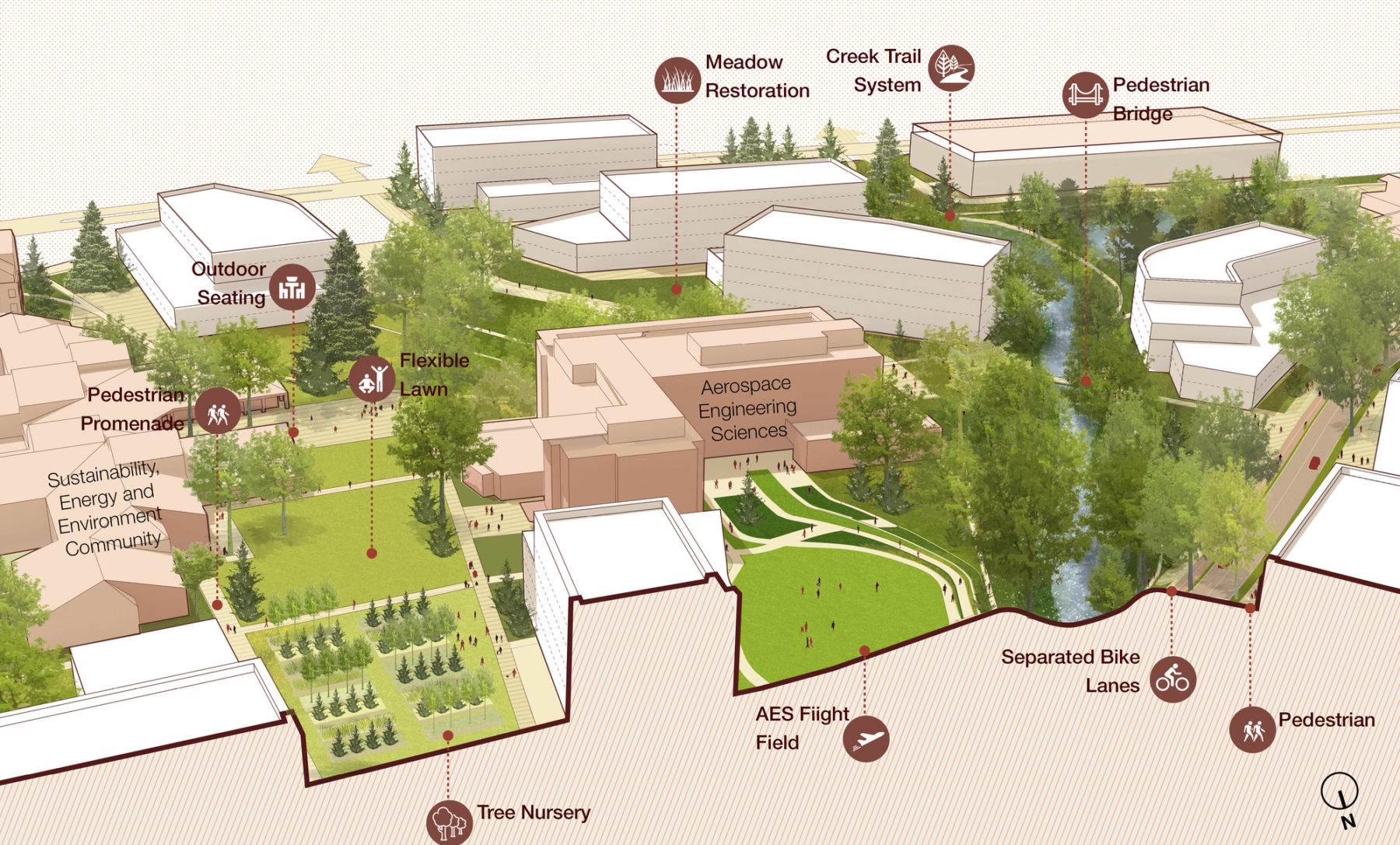
Innovation Plaza is located on the southeast corner of East Campus and provides a long-term location for a tree nursery
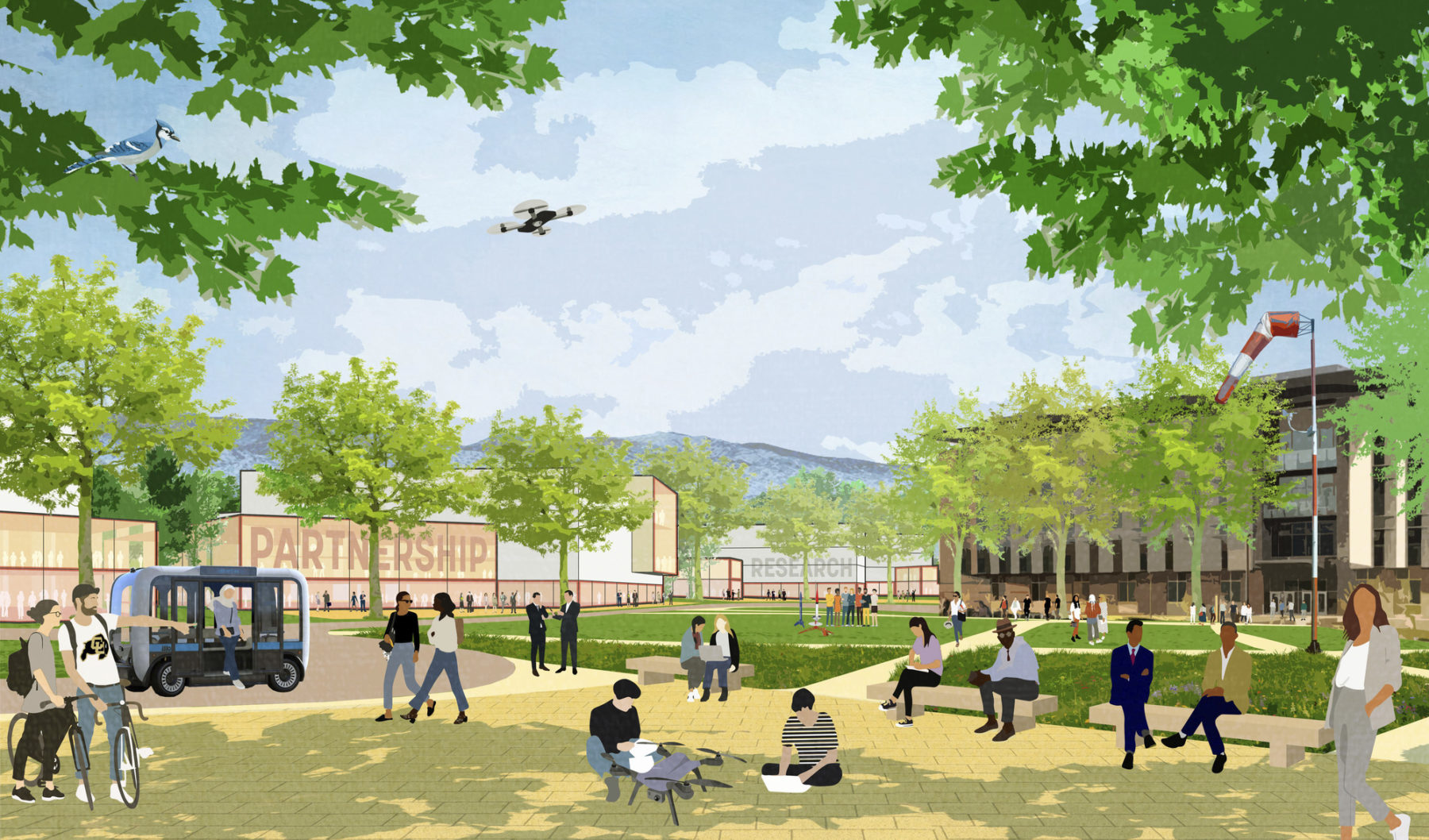
Partnership and aerospace buildings on East Campus
Campus Heart, Summer: The Campus Heart is designed to support year-round activity, including passive recreation, collaboration, and meeting space, as well as space for more organized activities
Discovery Drive is reimagined as the East Campus Spine—a pedestrian-priority corridor that provides connectivity across East Campus
Innovation Plaza is located on the southeast corner of East Campus and provides a long-term location for a tree nursery
Partnership and aerospace buildings on East Campus
Williams Village is primarily a residential campus located southeast of Main Campus. The campus is characterized by high rise residential towers and lower rise, but expansive apartment complexes surrounding a central green recreation space. A key objective for Williams Village is to support the formation of a holistic student community. To achieve this, the CMP proposes a network of new spaces to create a more balanced student experience.
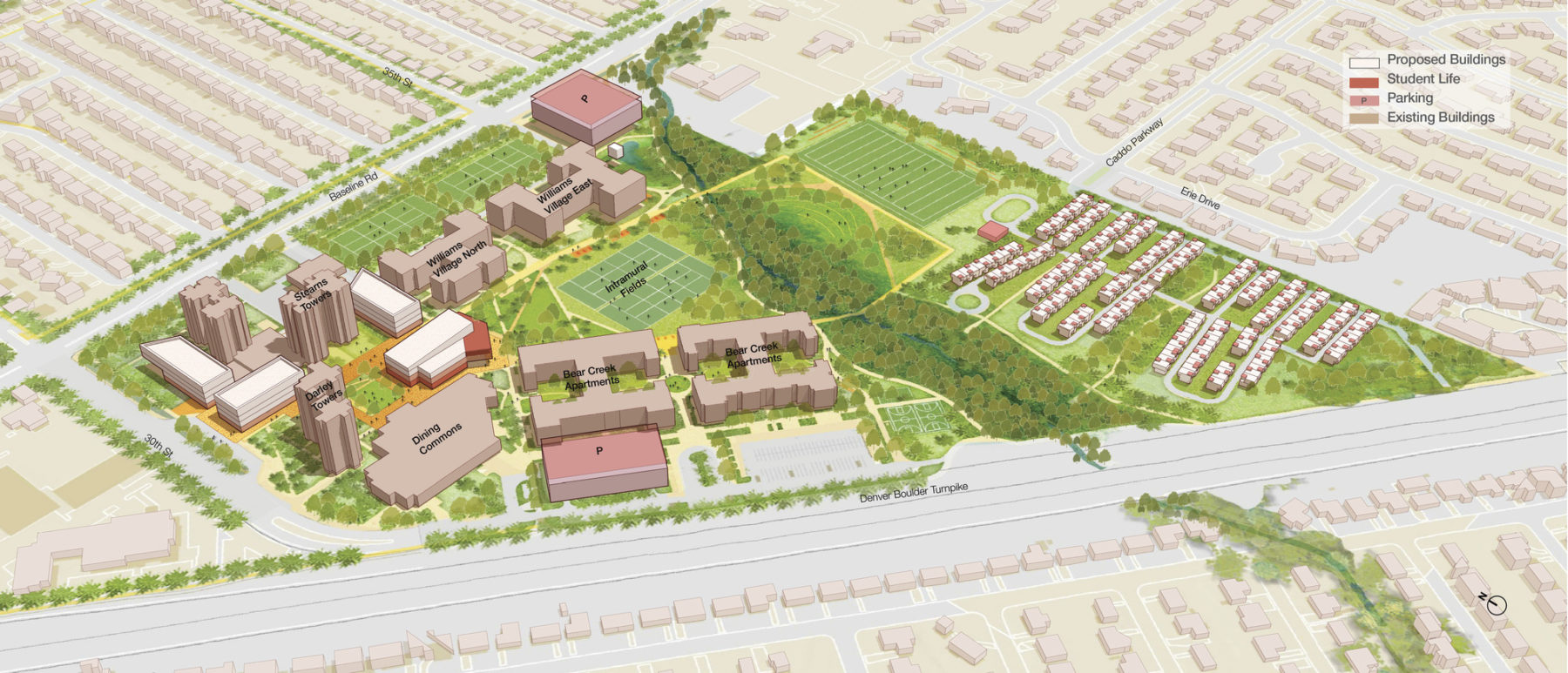
Williams Village framework
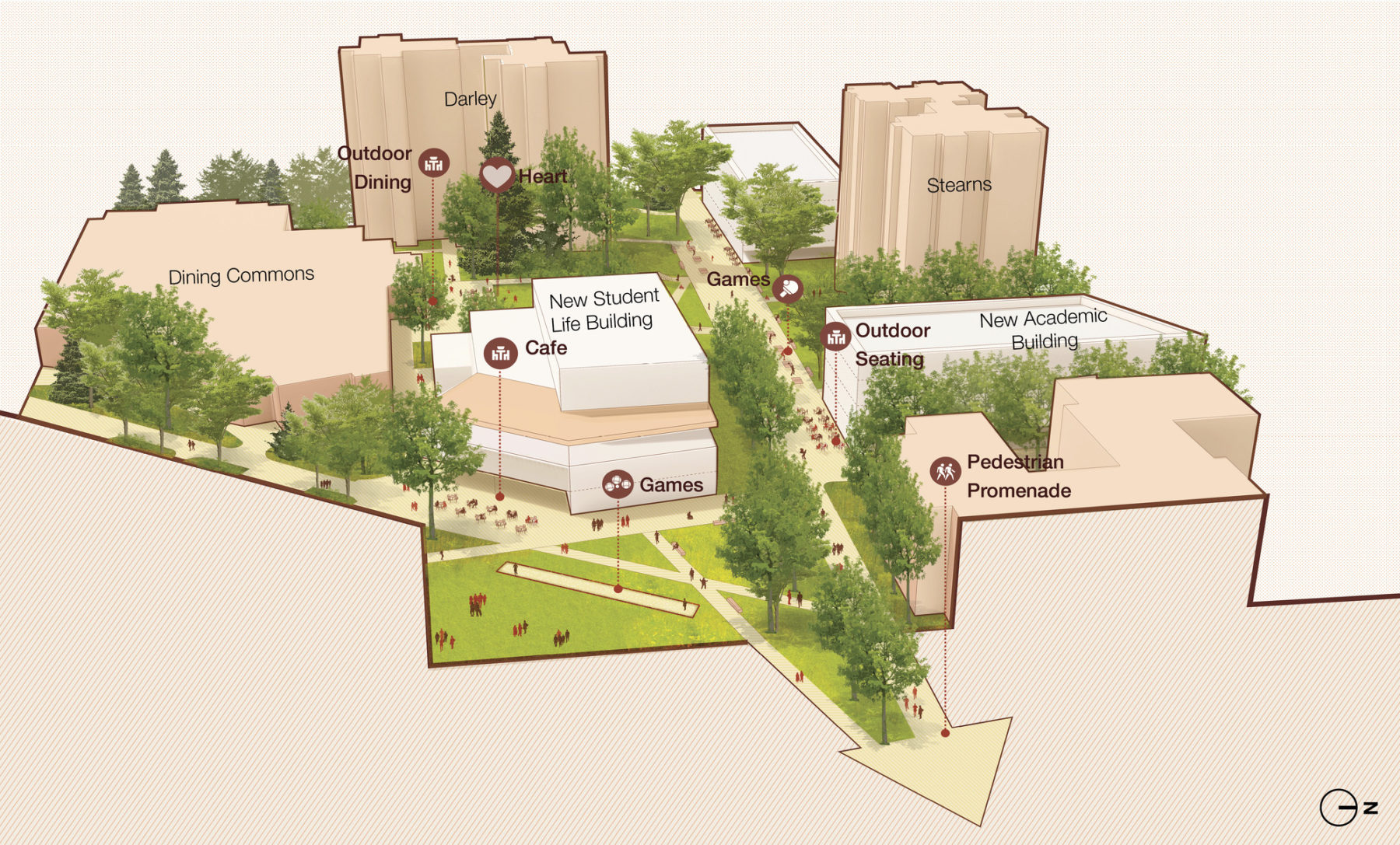
Along the Williams Village activity spine, a new student life building is proposed next to the existing dining commons. The new building frames and engages with the open space.
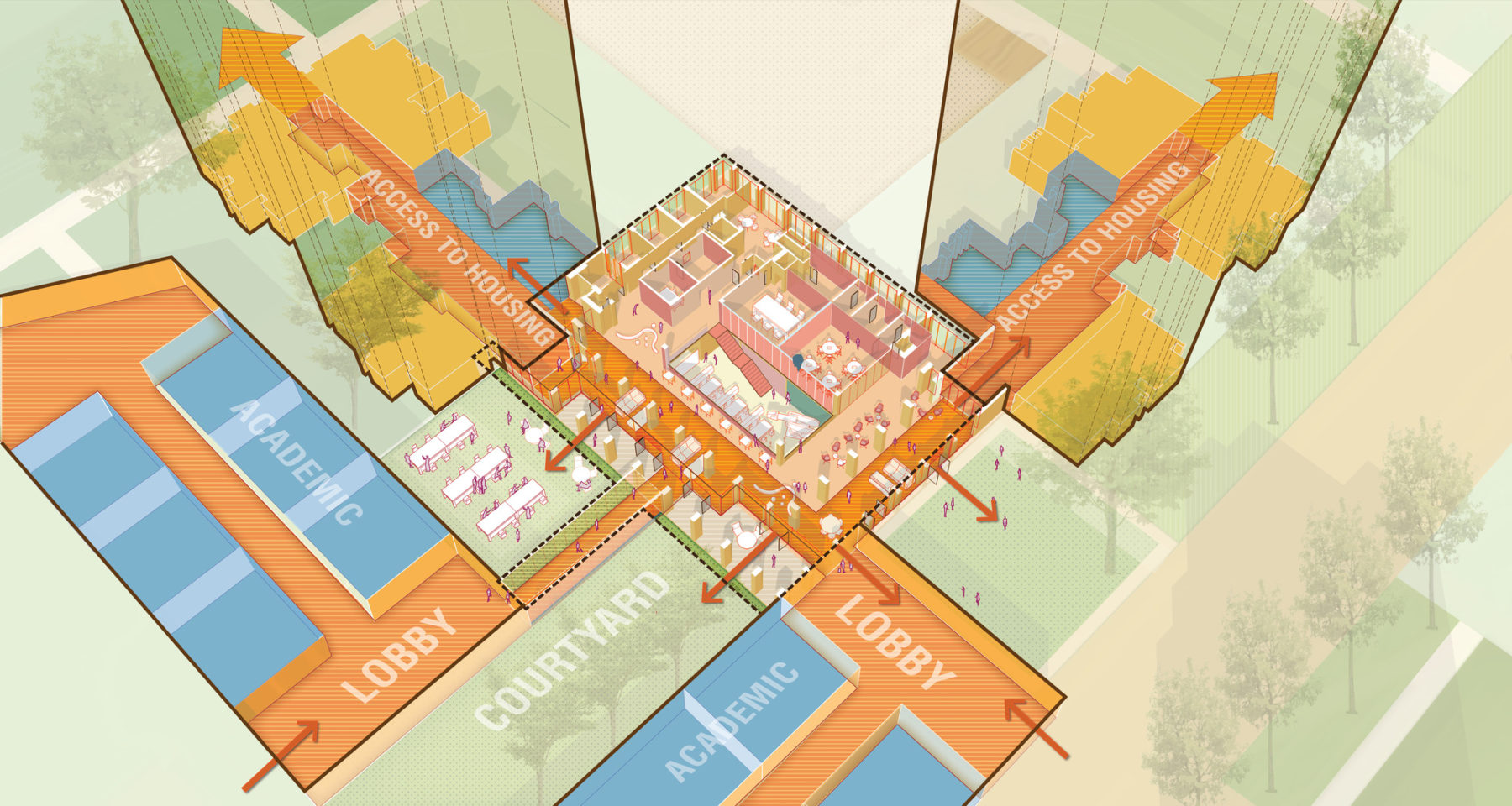
The one-story portion of the Stearns Tower complex transforms from a residence hall lounge to a new academic hub for Williams Village
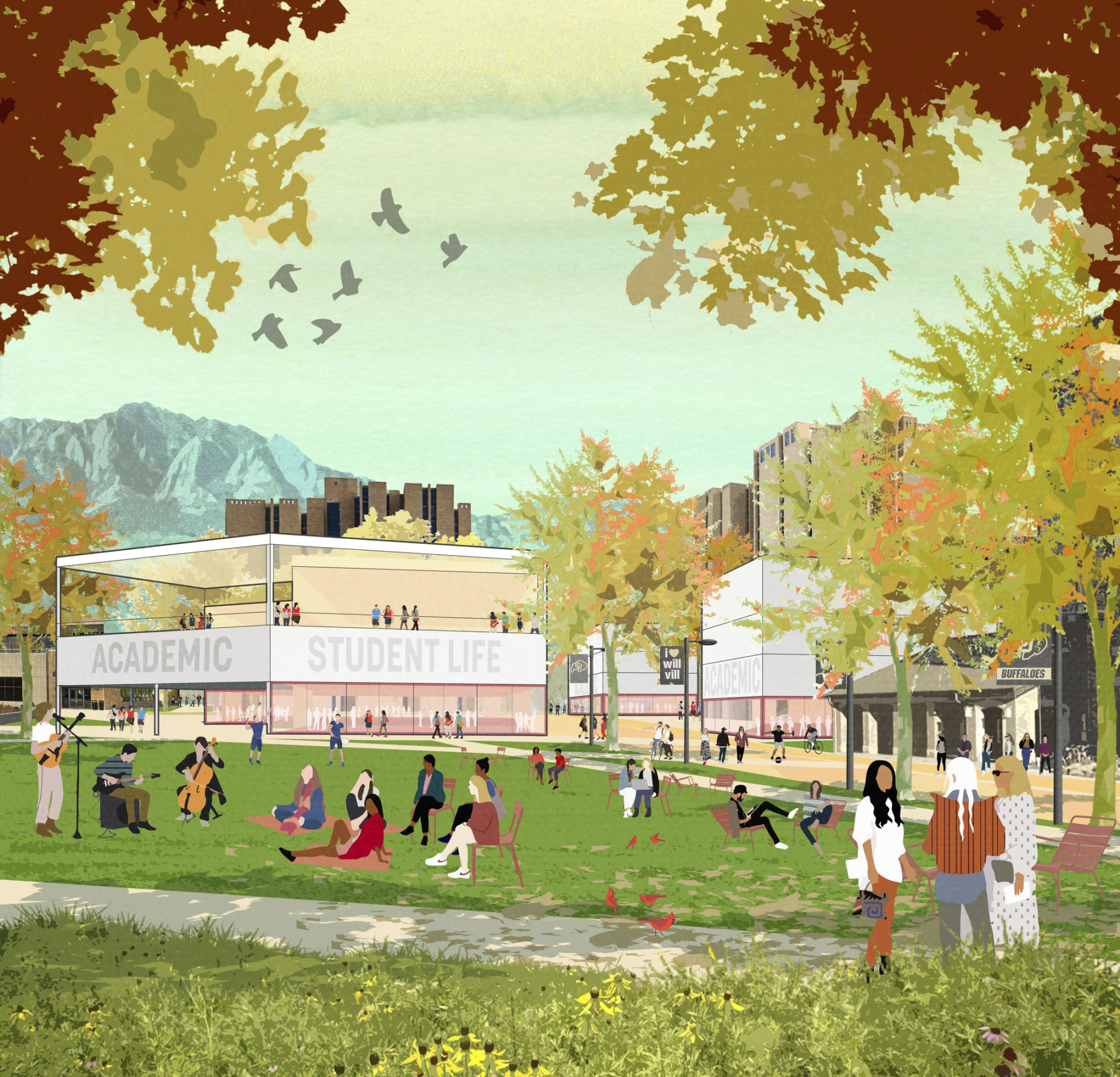
Williams Village activity spine and student life hub
In addition to the main master plan document, the project team developed a series of design and landscape guidelines. The design guidelines are intended to support the campus master planning design principles organized around specific districts and designated building program typologies. The landscape guidelines are organized by landscape typology and are intended as a reference for designing new campus open spaces.
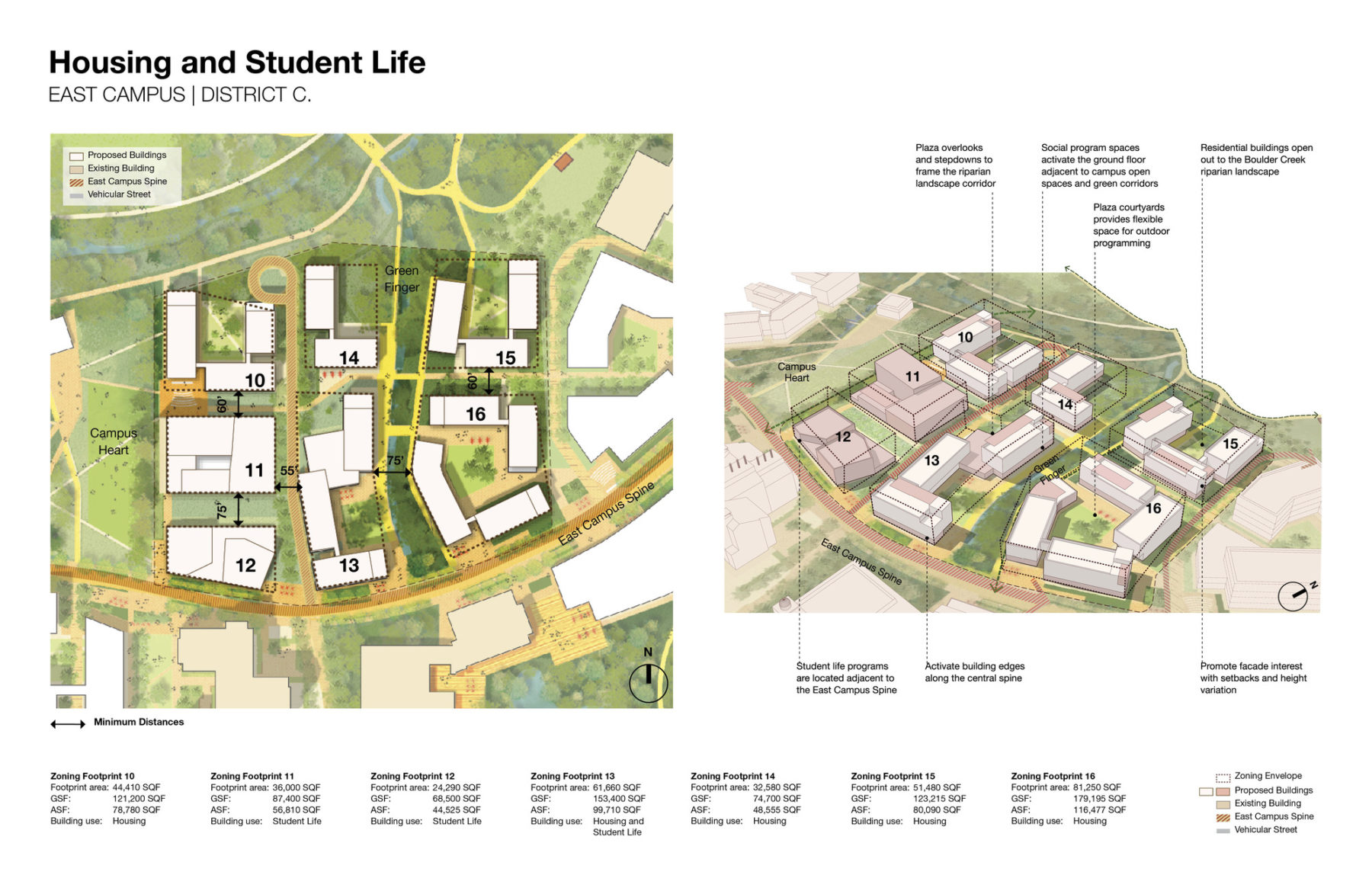
Design guidelines provide recommendations for future development at the district scale
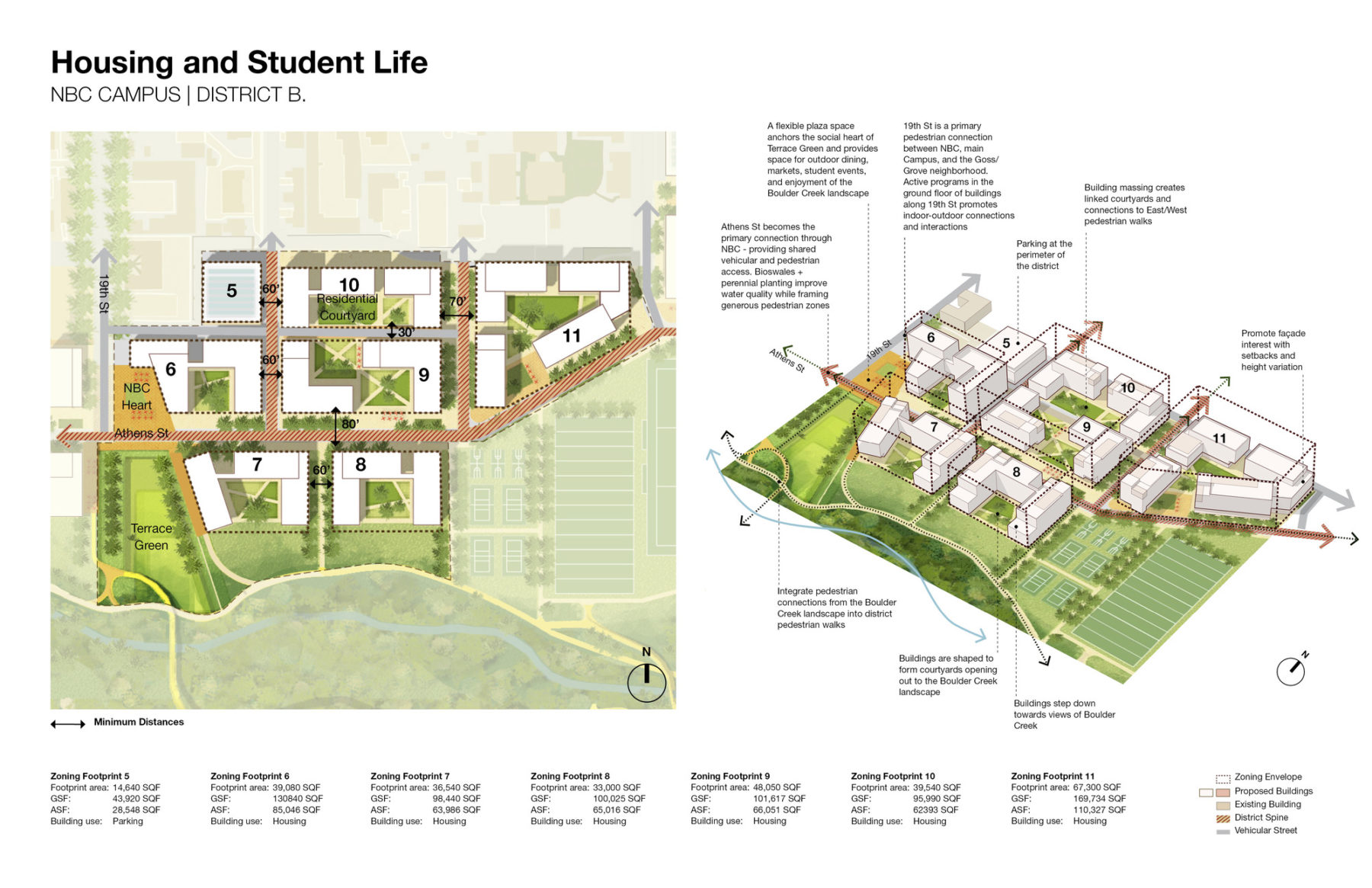
The guidelines for each district indicate zoning footprint designations, conceptual building siting, massing, and open space strategies, all of which reflect core tenets of the CMP
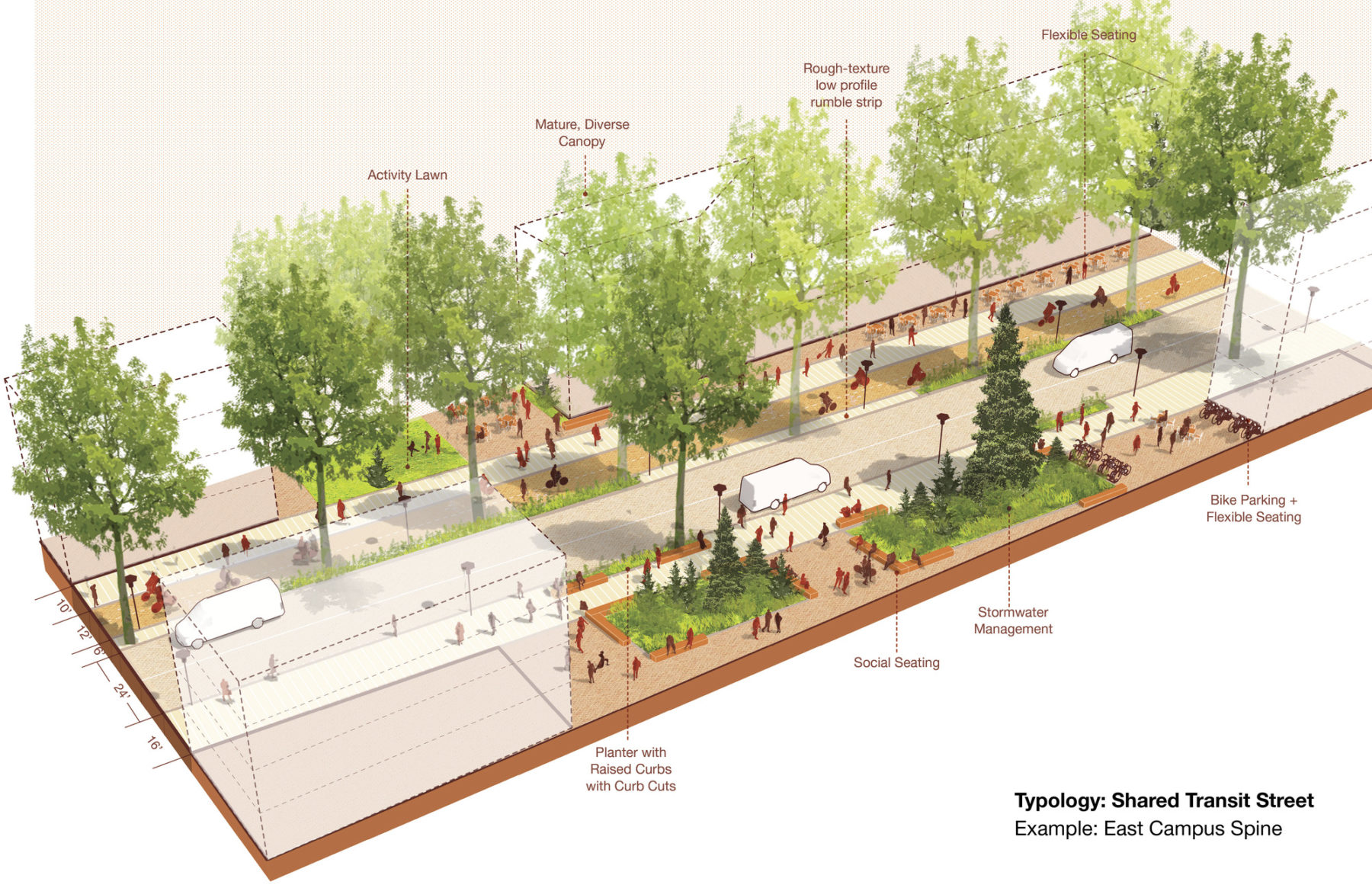
The design team provided examples of each landscape typology using the guidelines across different campus conditions
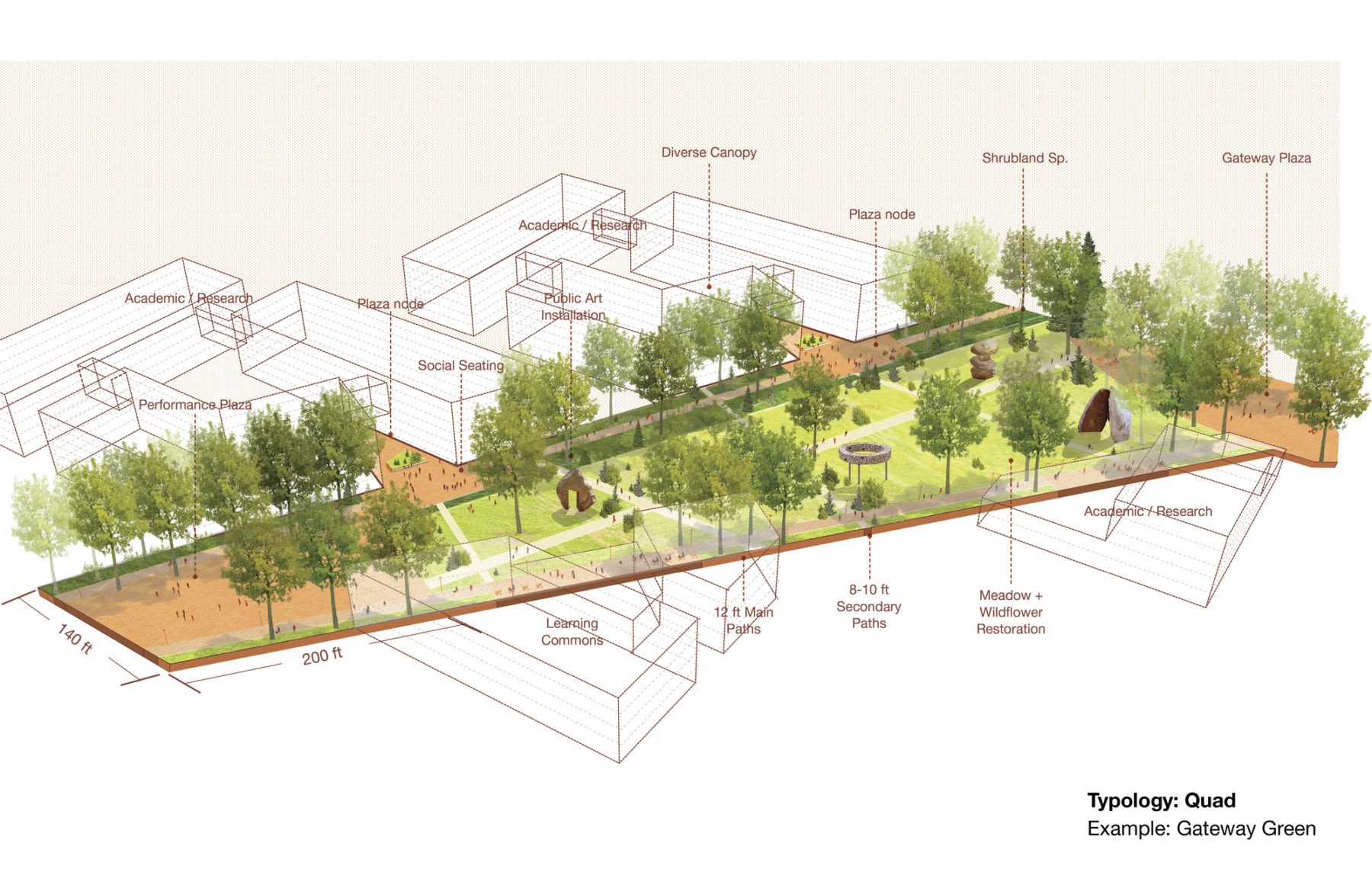
Each landscape typology includes information regarding key dimensions, materiality, and recommended planting palettes
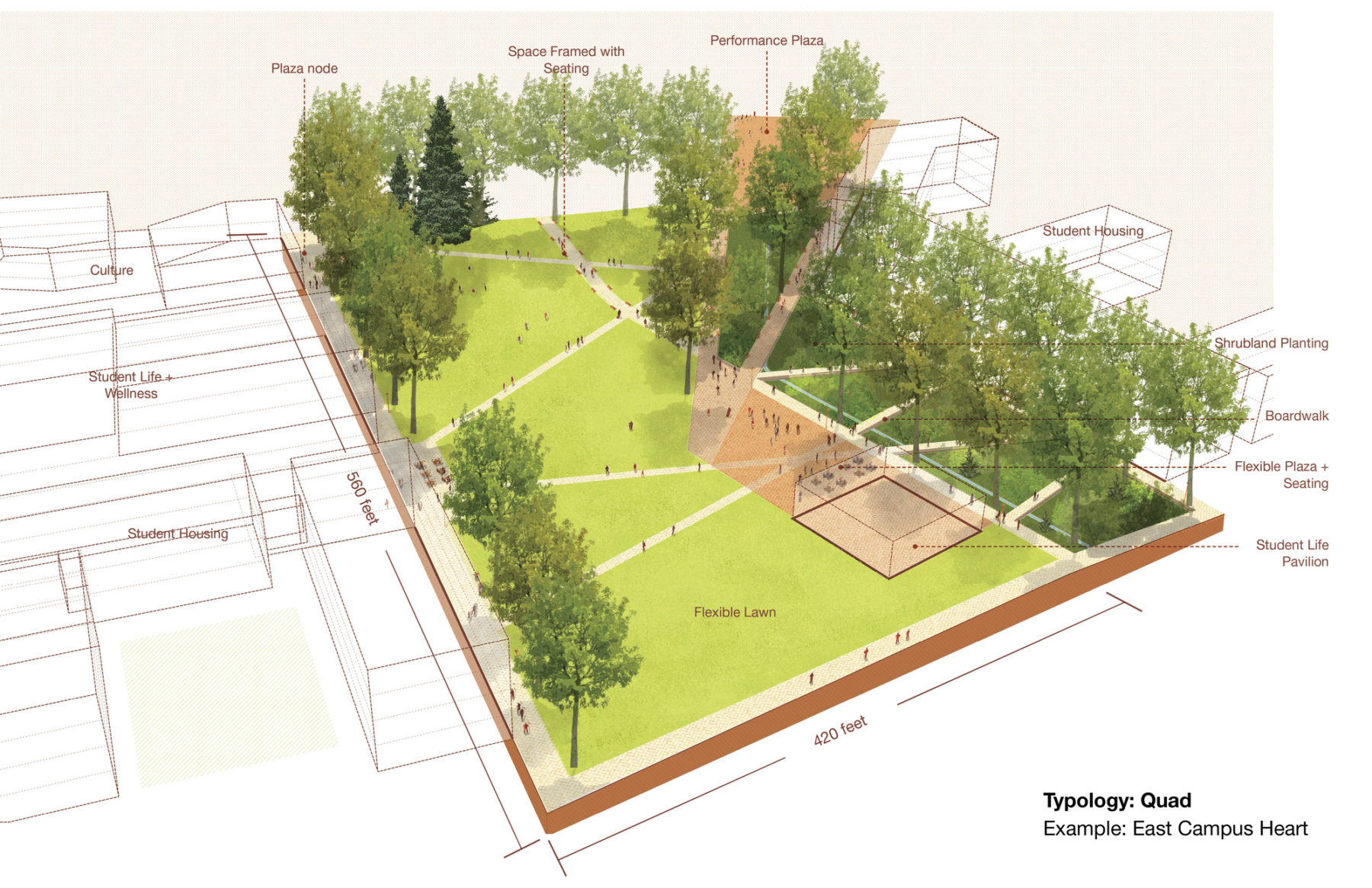
These new typologies borrow from the historic core of Main Campus and were created to ensure that new open spaces with modern material choices still feel integrated with the existing campus character
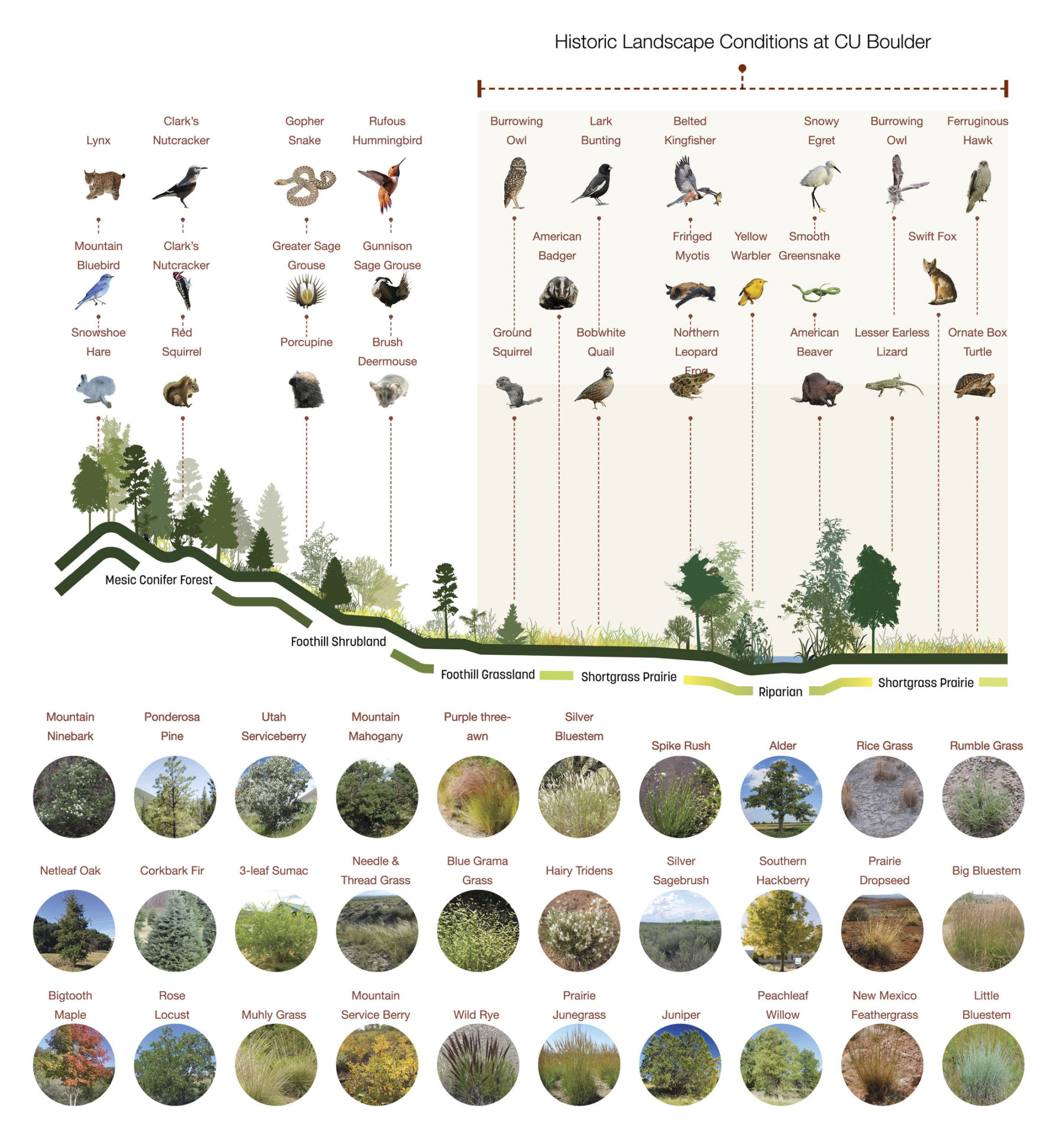
The landscape guidelines cataloged CU’s diverse palette of native and adaptive plant species
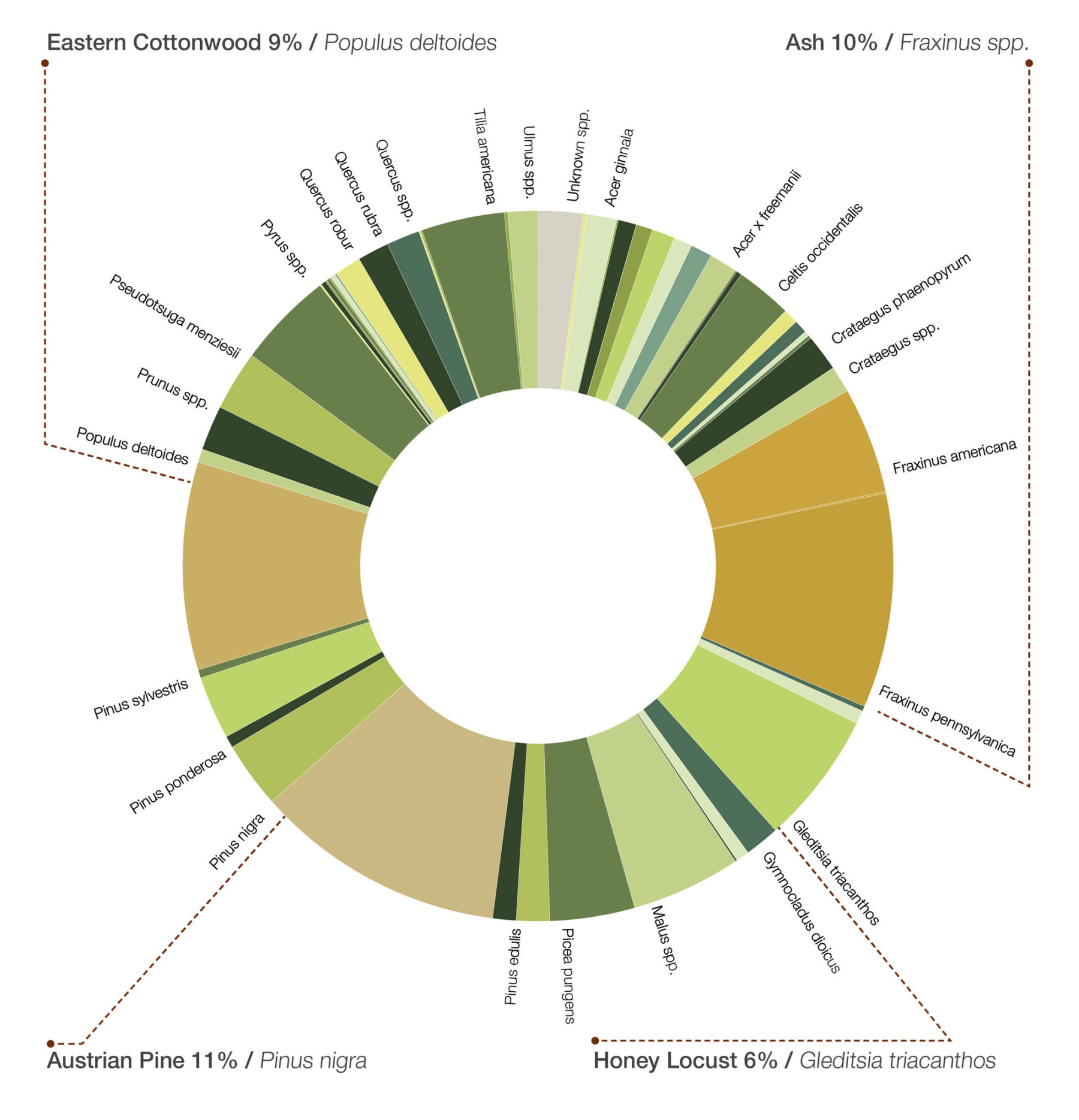
Canopy analysis highlights districts likely to experience stress from climate change and recommendations for maintaining a healthy canopy in the future
The design team provided examples of each landscape typology using the guidelines across different campus conditions
Each landscape typology includes information regarding key dimensions, materiality, and recommended planting palettes
These new typologies borrow from the historic core of Main Campus and were created to ensure that new open spaces with modern material choices still feel integrated with the existing campus character
The landscape guidelines cataloged CU’s diverse palette of native and adaptive plant species
Canopy analysis highlights districts likely to experience stress from climate change and recommendations for maintaining a healthy canopy in the future
For more information contact Tyler Patrick, Romil Sheth or Joshua Brooks.
Sasaki is embarking on a campus master plan with the University of Colorado Boulder, nearly sixty years after the firm’s initial planning effort was completed in 1962.
A look at projects in the state from the 1960s to today